Berkeley Unified School District
Berkeley High Jacket

Many current solutions to climate change bear a hefty price tag. Aditya Sridharan argues that making climate action less expensive and more accessible is key to change on PAGE 6 Climate action must become more accessible and affordable
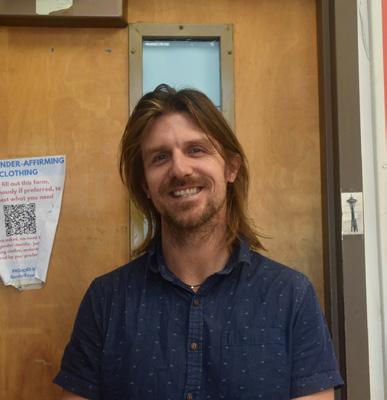

Student-made fashion hits the runway at BHS fashion show Student-made fashion hits the runway at BHS fashion show
Student teachers gain irreplaceable knowledge during their time in the classroom. Read about three BHS student teachers’ experiences and what they’ve learned on PAGE 10 Student teaching provides inimitable learning experience
1980 Allston Way Berkeley, CA 94704
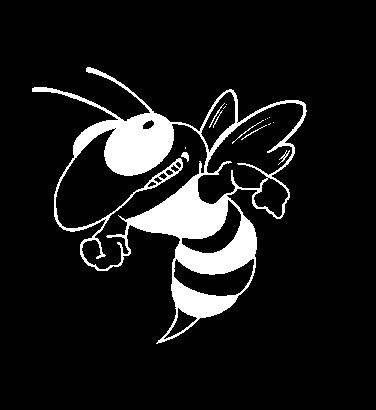
Bursts of color, imagination, and applause filled the Ciel Creative Space in West Berkeley last Friday night as more than 50 models walked the runway at Berkeley High School’s Sustainable Fashion Show. Over 400 students, family, and friends turned out to watch the models show off their unique flair, wearing outfits made by BHS student designers. The outfits were made from upcycled clothes, thrifted items, and new materials. From the intricate reworks of traditional clothes to designs pushing the boundaries of fashion, the show was a display of self-expression and creativity. PAGE 12
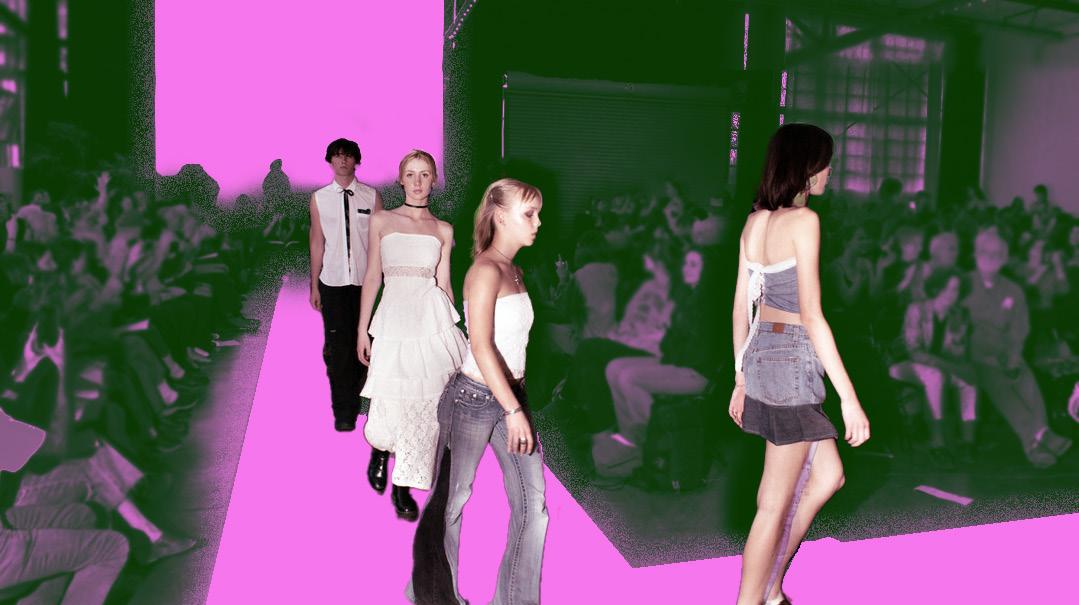


INVESTIGATIVE
Berkeley community navigates intricacies of accommodation plans for students
BY KALI PROUD staff writer
BHS Speech and Debate makes history, with duos winning both states and nationals
BY MINAMI SOGA staff writer NEWS
The Berkeley High School Speech and Debate team set a record this April, winning both the Tournament of Champions (TOC) and the California
State Championships. This is the first time that BHS has won the California State Championships and marks the first instance for a school to have won both the TOC and the California State Championships since the start of the National Parliamentary Debate League’s Tournament
of Champions.
Isaac Grolnic-McClurg, who won TOC with his partner Jacob Goldman, shared how the results of their victory surprised him and how it gave him affirmation for the work they put into speech and debate.
“I was initially very shocked,” Grolnic-McClurg said, “It took me like six hours or so to fully process it. I initially wasn’t even super happy, I think because I was like, well, it’s not really real in a sense. And I ended up feeling really great about it at the end of the day. (It was) affirming a lot of PAGE 2
“A 504 plan is an accommodation plan that I can use to help me succeed and reach my best potential in school,” Kai Fang-Stillman, a Berkeley High School student with a 504 plan, said. According to Vanessa Sinai, the 504 Program Supervisor at BHS, 504 plans and Individualized Education Plans (IEPs) are legal documents that protect the rights of students with disabilities.
“It’s a plan that prevents discrimination against a student because of their disability … It’s covered
under the section 504 rehabilitation act, so it’s a civil rights law,” Sinai said. According to Sinai, some examples of accommodations include being able to leave class early, being able to wear headphones to cancel out overstimulating noise, getting extra time on assignments or tests, and more.
Sinai explained that in order to get these plans and their accommodations, students need to go through a process that can span months. “It’s like a 60-90 day timeline, basically,” Sinai said.
One of the first steps to get a 504 plan or an IEP is to schedule a Student Success Team meeting (SST). “It’s a meeting with your PAGE 9
BY YOSHI ROHN staff writer
Non-Profit Org. US Postage Paid Oakland, CA Permit No. 8334
ELIOT HERTENSTEIN
Berkeley’s Isaac Grolnic-McClurg and Jacob Goldman face off against Nueva Syon Patel and Logan Ramanathan at nationals.
PHOTO ILLUSTRATION
COURTESY
OF LINDEN KOSHLAND
BY ANJA BALL
www.berkeleyhighjacket.com • friday, April 26, 2024 PUBLISHED BY AND FOR THE STUDENTS OF BERKELEY HIGH SCHOOL since 1912 BERKELEY HIGH no. 15 ENTERTAINMENT
U9 teachers educate, empower students with Climate Conference
BY EVA KATZ staff writer
On Friday, April 19, 2024, Berkeley High School teachers held a Climate Conference with five out of seven Universal Ninth Grade (U9) hives. The conference consisted of over 20 workshops with a variety of focuses. The workshops fell under four sections: math and science, creativity, garden and community, and action-focused. Each teacher sponsored a workshop, but their students were not required to take part based on their teacher. Freshmen selected their choices for the workshops they wanted to attend and then went to wherever they were assigned instead of their typical hive classes. In the days and weeks leading up to the conference, participating hives have learned about climate change and climate solutions in their Ethnic Studies/Social Living (ESSL), and English classes.
“We have pulled all of our resources from Berkeley and have found lots of different people who are experts in their fields to teach our students through a lot of project-based learning and interesting seminars on their discipline,”
Menaka Gentle, a U9 ESSL
really depressing and anxietyinducing. We want students to be able to learn about it in a way that will help them see how they can get involved and that there are real kinds of solutions that are happening all around us,” Zia GrossmanVendrillo, a U9 English teacher who helped organize the event, said.
“We want students to feel energized about getting involved in trying to fight climate change ...”
Zia Grossman-Vendrillo U9 English Teacher
teacher, said. Gentle ran a workshop with a creative focus on “The Power of Preservation” to learn the basics of pickling, fermenting, salt preserving, and canning. Students had the chance to try out the preservation techniques, as well as take the things they made home.
“We want students to feel energized about getting involved in trying to fight climate change and to feel empowered to do so. Often, when you are starting to learn about climate change, it’s
Masha Albrecht, a BHS math teacher, ran a workshop on the use of sunlight and shadows to charge a solar panel efficiently. Students used small solar panels to power different devices, such as a phone or a fan. They used math from Math 1 and examples of math all the way through calculus. Albrecht said, “I’m really, really concerned that we’re not addressing climate change more urgently every single day. We know as teachers that our students are anxious about climate change, so we feel that part of our responsibility is to educate (them) so that (they) can understand what’s going on and also have some tools
for affecting change.”
Another workshop in the creativity category was “Denim By Nature Upcycling Fashion Waste,” run by Remake and Ciclo SF. Remake and Ciclo are both companies that work to promote fashion sustainability. Remake uses campaigns to aid sweatshop workers and hold corporate fashion companies accountable for their negative contributions to the environment. Ciclo is a working studio that offers sewing classes to assist and
encourage sustainable clothes.
In the workshop, students learned about Remakes’ goals, and, in association with Cilco, had the opportunity to turn used denim into naturethemed jewelry. The workshop was run by Amy Auerbach, who volunteers for Remake.
Auerbach said, “It’s just a way to have students interact with clothing and make it something different. Denim is very toxic to the environment with all the water it uses, and the dye, and the finishing, so
(the goal is to be) able to take denim that you might throw away and repurpose it into something else.”
Other examples of workshops hosted include “Navigating Climate Anxiety with Herbalism,” “Using AI to Fight Climate Disaster,” “Get to Know the BHS Garden,” and many more.
Grossman-Vendrillo said, “If we’re not teaching students to be prepared for climate change, then what are we teaching them?”

BHS Speech and Debate wins states, nationals in championship
things about my own ability and how our school teachers debate and the way we go about it. It was a very good feeling in the end.”
Grolnic-McClurg described his experience at TOC, sharing how there was
not much diversity in terms of participants, but he was happy to meet people he had debated against in the past.
“I mean, it was always a little weird because debate doesn’t always attract the most representative population overall. And then nationals are, arguably, even more elitist
in a sense. So, a lot of the people at nationals are from private high schools. Despite that, I think it was still really nice. It’s really cool to see a lot of people that I’ve already been against online … and it was good to meet people, so that was a pretty good atmosphere,” Grolnic-McClurg said.

Amber Safir, who won the California State Championships with her partner Zachary Yoo and also participated in TOC, shared how she felt going into both tournaments.
“I was definitely really nervous,” Safir said. “Debate can be a really stressful environment because basically, what you’re doing is you’re just arguing with people all the time. And it’s very high adrenaline because you get your topic, and then you have very limited time to prepare. It’s just everything’s happening really fast.”
According to Safir, the achievement was very rewarding but also emphasized how, as a team, their motivations towards debate extend beyond just winning.
“It’s really exciting. It makes us all happy. But it also doesn’t mean that much … What we love about debate isn’t
winning. It’s the other stuff and learning. (For) all of the varsity people, we’re really excited when we win. But most of us honestly care more about teaching the novices. So while it’s super cool, and you get to show off and get bragging rights and stuff, that’s also not really what debate is about,” Safir said.
The BHS Speech and Debate team’s head debate coach, Joel Jacobs, revealed how students prepared for the events. “Well, for the national championship, there were topic areas that they released in advance,” Jacobs said, “so normally, they don’t know what they’ll be debating. But they knew that at the Tournament of Champions, there would be a debate about Nigeria and a debate about US food policy, so we spent some time practicing debating about those areas and talked a little bit about some of the issues that might come up.”
He added that much practice involves tasks such as building on skills, understanding the rules, learning different debate theories, and establishing organization.
Hunter Valencia, the assistant and on-site debate coach for the team, shared how he hopes the team will try new debate formats to build an even stronger team for future competitions.
“One of the future goals that I really want to see in this team is, it’s similar to track and field where there’s many different events. Berkeley High School is incredibly good at one particular one, which is parliamentary debate. I would really love to diversify the events and start to get the people interested in speech and getting them interested in another format called world schools, and just kind of turning the program into a true powerhouse,” Valencia said.
FRIDAY, APRIL 26, 2024 2 aaronstevens@students.berkeley.net news editors: Finola Jackson & Aaron Stevens BERKELEY HIGH JACKET NEWS PATRONS & SPONSORS SPONSORS The Jacket needs your help! As a completely student-run, self-funded newspaper, we rely heavily on financial aid from patron subscription and business advertisements in our newspaper. Our prices are $60 for a one semester subscription, and $85 for a full year. Full sponsorships, which include a full year subscription, are $250 and up. If you would like to subscribe or contribute any amount, please send a check to the BerkeleyHighJacket,Business Manager, 1980 Allston Way, Berkeley, CA, 94704. Checks can be made out to the Berkeley High Jacket. For more information, contact Business Manager Drew Henderson at bhsjacketbusiness@gmail.com Robert Stepsis, Claudia Polsky, Charles W. Wolfram, Christopher Lutes, Pedro Rodriguez, Joan Dorgan, Steven and Emily Birenbaum, Cheryl Berg, Uri Sarid, Michelle Sandberg, Dorothy A Haas, Joan Firestone, Denise Yip, Joye Wiley, Catherine Zhang and Larry Drumm
CONTINUED FROM PAGE 1 ELIOT HERTENSTEIN JESSIE LEE
Isaac Grolnic-McClurg and Jacob Goldman speaking at nationals.
BHS juniors take SBAC and CAST tests
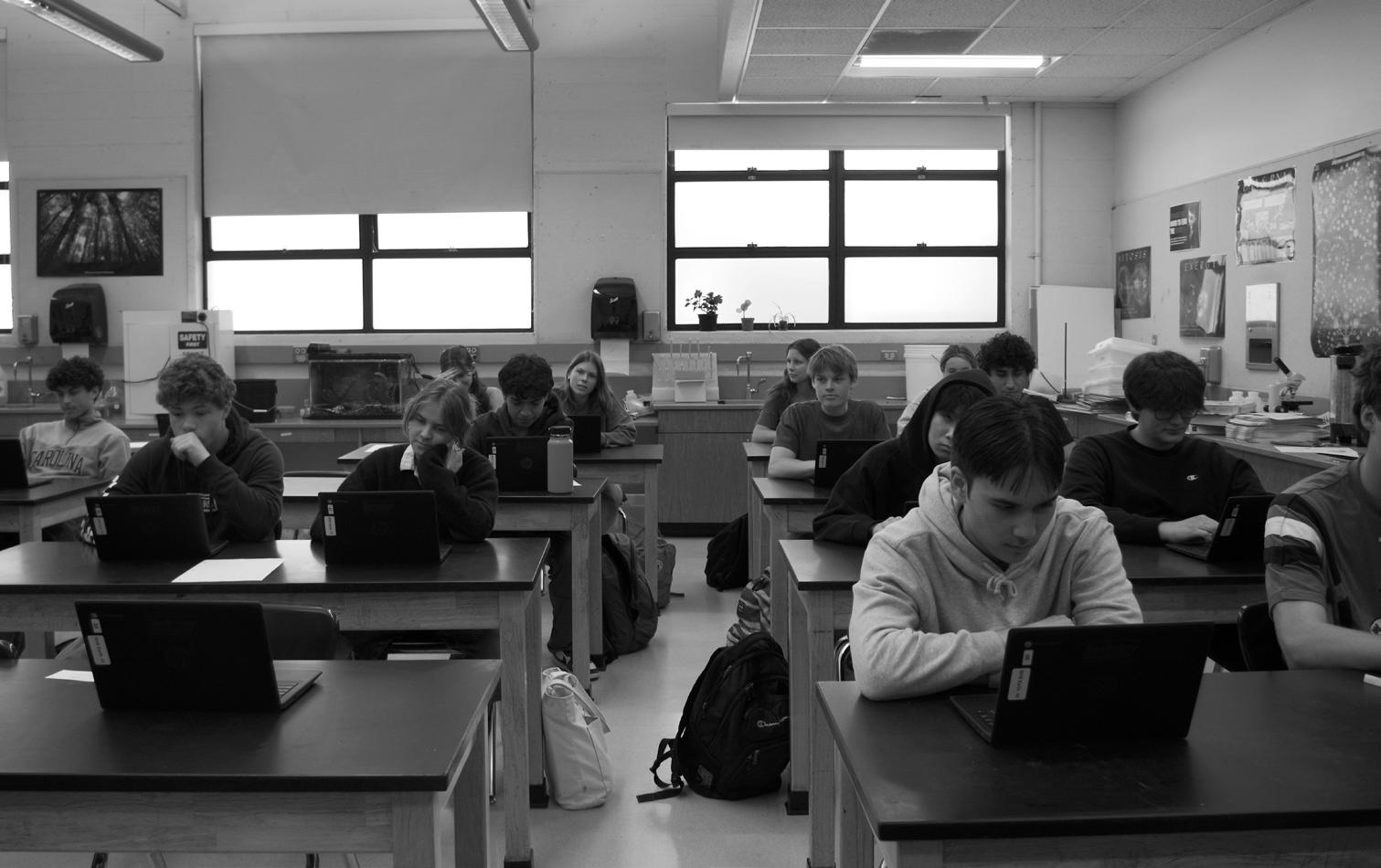 BY RORY NADEAU
BY RORY NADEAU
Starting on Monday April 15, 2024, juniors in high school across California will be required to take a series of state tests to determine where extra funding is necessary for student success. Many Berkeley High School students have chosen to opt out of these tests, and there is rising concern about the timing of these tests in relation to the various AP tests that are set to take place in the preceding and even overlapping weeks.
The BHS Dean of Attendance, Cassandra Tesch, explained that the district is required to meet a participation rate of 95 percent for tests such as the SBAC and CAST. However, the district is not held to a specific proficiency requirement, as these tests serve primarily to provide data for the district to see where student support is most crucial and to help
gain funding in those areas.
“The people who work in our district present the data to the board,” Tesch said. “Then (the board) uses that data to justify the programs and the funding. So if … 40 percent of (freshman) are not scoring proficiently in math, then they use that to be like ‘Okay, we need a math coach,’ for example.”
the attitude around state testing to change, through emphasizing the benefits that students can get from performing well, such as potentially being able to place out of certain general education classes in college.
Boylan said that this would hopefully incentivize students to put in more
about having SBAC testing take the place of in-class preparation for their AP test that’s scheduled for the following week. However, she explained that she planned a review for her students that navigated around the timing of the SBAC test to try and make it less disruptive to their preparations for AP tests. “This is a high-stress time of year in general for juniors, and many of my students are taking two or three or more AP classes, so they’re definitely stressed out and could use that extra week. But, you know, I think as long as students know ahead of time to prepare for it, then it’s manageable,” Boylan said.

Tesch added that she hopes this data will become something that is not only valuable to the district but also a way for students to set goals for their own education. “I think it’s important for students to be owners of their own data and to know and be honest, like ‘Okay, I’m at this level,’” Tesch said, “and then for individuals to set their own goals and intentions and to be able to work towards them.”
“
... it’s important for students to be owners of their own data ... ”
Cassandra Tesch
BHS Dean of Attendance
effort when taking the SBAC and CAST tests. “Something that would really be helpful is if students had a better sense of how this benefits them or like what’s in it for them. It’s only fair to have some kind of benefit if we’re asking them to go through the work and take the test seriously,” Boylan said.
Similarly, Kelly Boylan, an AP U.S. History teacher at BHS, expressed hope for
Boylan explained that many of her AP U.S. History students are concerned
Some juniors are choosing to fully opt out of this testing process. Sophie Novick-Prucher, a BHS junior, explained that the decision to opt out of the SBAC and CAST tests was not a difficult one. “I’m in three AP classes, my AP tests are coming up, I’m taking the SAT in May, so frankly, I could use the time to study and focus on that,” she said.
NovickPrucher observed that many juniors are finding the timing of these tests particularly stressful. “It’s spring of junior year; there’s a lot going on for everyone, and then also like, all of these tests could very easily be in three of your AP classes. They’re in two of mine … but yeah, it completely interrupts what we’re doing,” NovickPrucher said.
NEWS BRIEF: BIDEN ADMINISTRATION ANNOUNCES STUDENT DEBT FORGIVENESS PLAN
BY ANNA WILLIAMS staff writer
President Biden announced on Monday, April 8, 2024, that he would be implementing a new student debt forgiveness plan that is expected to relieve over 30 million borrowers when combined with actions that the Biden-Harris administration has already implemented. According to the New York Times, while there are likely going to be legal challenges, Biden can begin administering some of the expected debt relief.
Biden said in his statement, “I will never stop delivering student debt relief to hard-
working Americans, and it’s only in the interest of America that we do it.”
Up until this point, the BidenHarris administration has been able to approve $146 billion in student debt relief through over 20 executive bills. This includes fixing Public Service Loan Forgiveness and IncomeDriven Repayment plans and initiating the SAVE plan, the most affordable student loan repayment program.
Last June, the Supreme Court blocked the Biden-Harris administration’s initial debt relief plan, which attempted to allow $400 billion of debt relief, which had the potential to affect 40 million people. This
prompted the Department of Education to pursue other ways to ensure debt relief, leading to the current proposal.
According to the New York Times, this project is expected to reduce payments for 25 million borrowers and remove all debt for 4 million people. This plan will affect those whose loan balances have increased because of interest, those who are low or middle class, those who are eligible for loan forgiveness under other programs, those who are paying off loans for an undergraduate degree over 20 years ago, and many more. This new plan targets specific groups of people as opposed to widespread forgiveness.
A quote I’ve recently discovered is, “A goal without a plan is just a wish” (Antione de SaintExupery). I’m a person who likes to plan things out visually, like making a physical copy of a grocery list or sketching down last minute info for a new recipe on a piece of paper. But when it comes to goals, I realize that I have many, but I don’t write them down. As a result, if I don’t visualize my goals, how will I know I’m making progress towards them? Also, if I make goals without a plan of action behind them, as Saint-Exupery claimed beforehand, I only end up with wishes. I want to share some ways that I’ve found to help me feel more grounded and focused on the goals I set for myself.
1. Decide
Choose the goals you want to reach, without any limitations. These could be goals to achieve by the end of the week or as far as in the next 20 years.
2. Write it down
Going back to the quote mentioned at the start, goals that don’t get written down are basically wishes. I think writing down goals gives them more impact than just saying them aloud.
3. You can go off track
Something that eases my mind about goal setting is this quote by Bruce Lee which goes, “A goal is not always meant to be reached, it often serves simply as something to aim at.” I think there can be a lot of pressure to commit to the goals you set, when you can just use them as a guide. You shouldn’t be upset with yourself if you don’t reach all the goals you set for yourself, because you’re already making positive progress by aiming for those goals in the first place, rather than not having anything to work towards at all.
4. Visualize
If writing goals down doesn’t work well for you, I think another good tip is to actually visualize your goals. You could physically draw them out, or print out photos to create a photo collage or mood board. For example, if you have a goal to get good grades, you can make a photo collage of papers with 100 percent marks on them and make it your phone’s wallpaper, so every time you open your phone, you’re reminded of your goal. I think that last part is the key point when it comes to visualizing your goals. Whether you draw them out, see them digitally or use another tactic, you should be encountering your goals on a daily basis. And to help with this, just have your visual goals in easily accessible places: on the walls in your room, on a mirror, or on your phone.
Overall, I think setting goals can help people have things to constantly work towards, especially when everyday life can get hectic quickly. I also think that the feeling of accomplishment from reaching your goals is unmatched and you can gain a better sense of self discipline from achieving what you set out to do.
NEWS 3 FRIDAY, APRIL 26, 2024 THE ART OF IMPROVING ZOE PATTERSON
staff writer
QUINCY MORRIS-FRY
Juniors in an AP Biology class take out Chromebooks to begin testing.
BHS Development Group hosts annual fundraiser at Gather
BY LUCY GRIFFITH staff writer
On Monday, April 15, 2024, the Berkeley High School Development Group (BHSDG) hosted one of their biggest fundraisers of the year at Gather, a restaurant in Downtown Berkeley, with about 130 people in attendance.
The BHSDG funds many programs and events at BHS, which includes free tutoring, college support services, and classroom supplies for teachers and students. The BHSDG also provides grants to studentrun groups for events like the BHS sustainable fashion show or the BHS film festival.
is one of their biggest sources of funding, along with the annual Fund and Spring Match Campaign. Gather has now hosted a development group fundraiser for three years. Sponsors raise money to help offset the cost of food. For admission to the event, the BHSDG sells tickets and the profit goes directly towards the group.
Center which opened last semester and helped hundreds of students.
Dacher Keltner, a UC Berkeley psychology professor and co-founder of the Greater Good Science Center, was the keynote speaker of the event. He spoke on the importance of feeling awe which was the topic of his latest book, “Awe: The New Science of Everyday Wonder and How It Can Transform Your Life.”
“The (BHSDG) offers donations for both big and small things, and they’re flexible.”
Sloane Morgan BUSD School Board Member
Gather served pizzas, fresh salad, drinks from the bar, and cookies to everyone who bought a ticket in their indoor seating area.
Sloane Morgan, a Berkeley Unified School District board member who helped to organize the event, said, “I’m really inspired because the (BHSDG) offers donations for both big and small things, and they’re flexible.”
The BHSDG operates primarily upon funding from their fundraisers and donations. The annual fundraising event at Gather
First, several board members spoke and shared a quote which represents the mission of the board: “Educators will not maximize school outcomes for their most marginalized populations until they begin to better understand how the social emotional wellbeing of students profoundly influences learning.”
They continued by talking about their support and the success of the BHS Wellness
In his speech, Keltner argued that it is important for humans to feel awe. In a study he conducted in 2003, Keltner found that humans feel awe an average of two to three times a week. However, Keltner believes kids aren’t experiencing enough mystery and awe in their lives. He quoted Albert Einstein, who testified the importance of awe: “The most beautiful experience we can have is the mysterious.” Keltner also explained that awe is good for your physical health because it activates your vagus nerve, which helps you breathe, can slow your heart down, and reduce inflammation in
your body.
He explained how some humans find awe. He first explained the concept of moral beauty.
“Humans have a transcendent ability to find beauty and other people’s courage and kindness, like overcoming poverty, racism, and violence,” said Keltner.
Keltner argued that music and religion can also elicit awe, as well as engaging with nature.
Jasdeep Malhi, a BHS intervention counselor, recounted a boat trip she
took in San Francisco Bay to whale watch with several BHS students who had recently experienced the loss of a friend.
She was standing with a kid and sailing under the Golden Gate Bridge and he said to her, “Thank you so much for (this opportunity), I didn’t realize how much I needed this until we came out here. I have never been on a boat.” Malhi continued by saying, “It is because of the Development Group, because of your donations, and because of your generosity. That
is how we give these kids opportunities.”
In 2023, around $10.6 thousand from the BHSDG went to supporting diverse communities and enrichment activities.
Lissa Franklin, a BHSDG member, encourages people to continue to interact with the group to make opportunities like this happen. “We’re only as good as the people that participate,” Franklin said. “Both students and parents, we like to learn about what the priorities are at the school.”
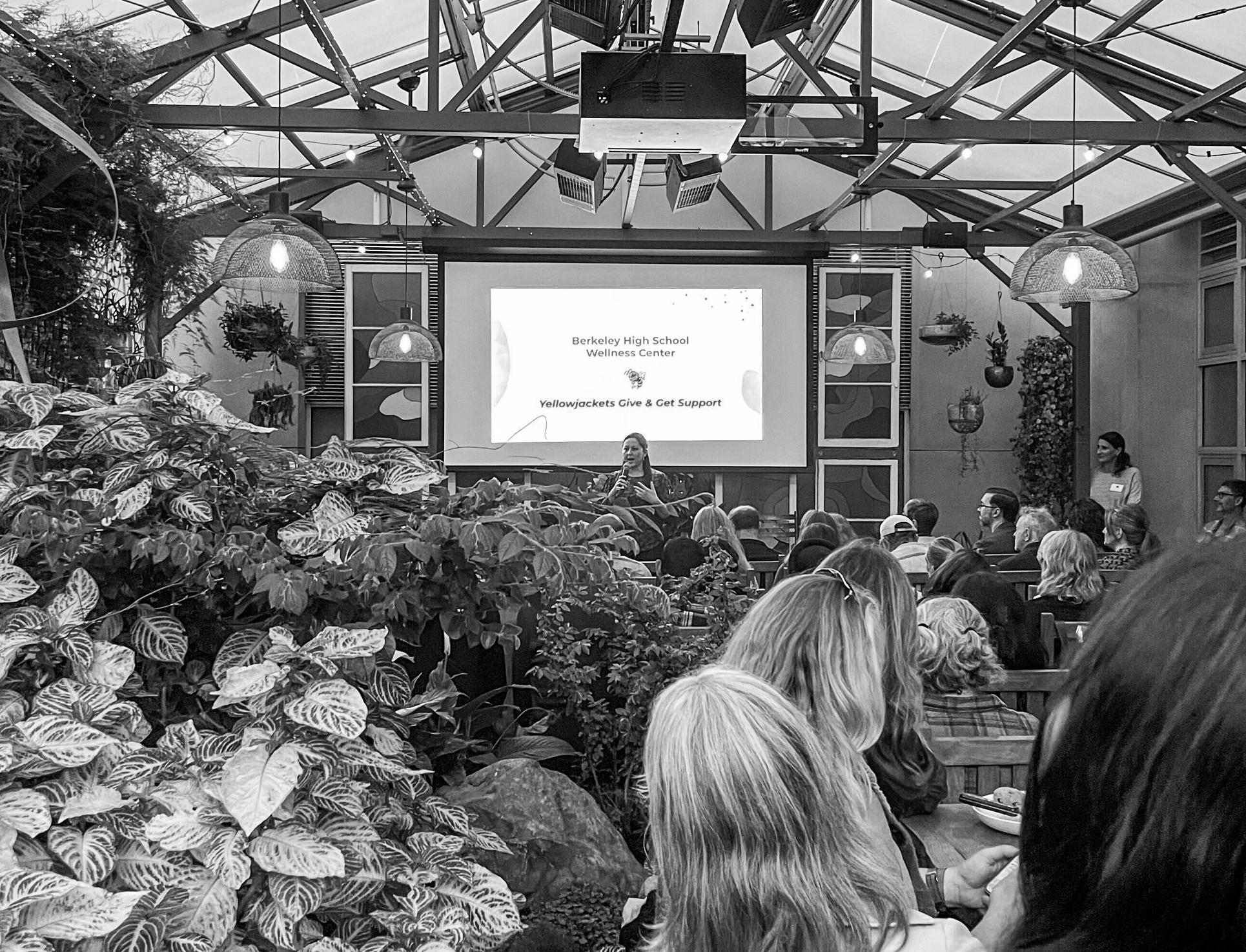
Peralta Community Colleges offer students free enrollment
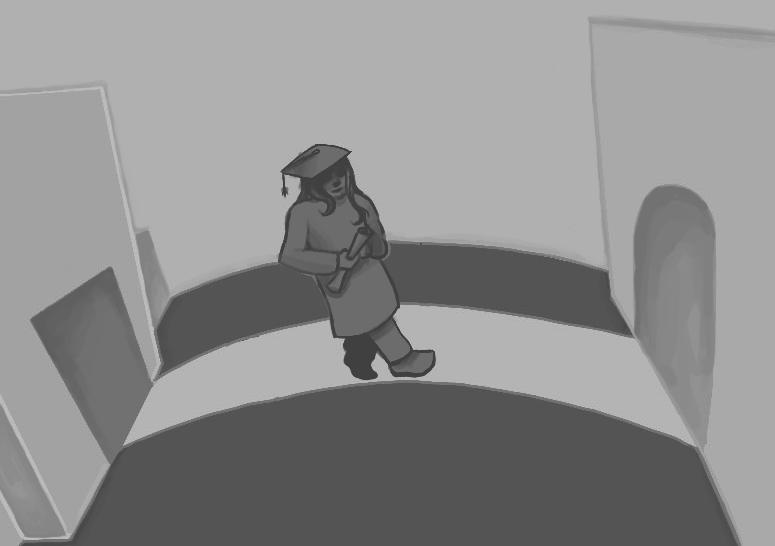 BY LUCY HOHN staff writer
BY LUCY HOHN staff writer
The Peralta Colleges provide education to 21,875 students — as of Fall 2023 — within their four community colleges: Berkeley City College (BCC), College of Alameda, Laney College, and Merritt College. In 2022, BCC and Laney College waived tuition fees for all students attending, aiming to bring students to their colleges and also give them a more affordable education. Following those
two colleges, in the spring of 2023, all four Peralta Colleges offered free course registration.
This is a program that the Peralta Community College District (PCCD) has titled “Fall is Free.” It follows the free course registration started in the Fall of 2022 by BCC and Laney and continued into the spring of 2023, titled “Spring is Free.”
According to the Peralta Community College District, this new policy has resulted in an increase in students across all four campuses.
Additionally, a 20
percent increase in African American students, an 11 percent increase in Latinx students, and a nine percent increase in Asian American and Pacific Islander students has occurred.
According to Maisy Matthews, her mom chose to enter the junior college system after not being accepted into UC Berkeley straight out of high school. It provided a cheaper option for her family and gave her an easy pathway into UC Berkeley after two years. Now, according to Matthews, her mom works in psychedelic studies for
public benefit.
Through hearing her mom’s story and first-hand experience, Matthews, a Berkeley High School sophomore, was able to see the many benefits of community college and, in her case, Matthews plans on enrolling in dual enrollment during her junior year.
schools with high tuitions.
“The students I’ve been helping in the past, I’ve always tried to push them to go to community college first, especially with our families who were at least
to community college and then transferring that much more appealing.
“I’ve always tried to push (students that I’ve worked with) to go to community college first ...”
Joanne Dumbrigue BHS College Counselor
“From what I know, dual enrollment is free. I haven’t done it myself yet but want to,” Matthews said.
CSUs, on the other hand, will cost $6,084 for full academic enrollment during the 2024-25 school year. UCs are estimated to have a tuition of $14,436 for the 2024-25 school year, not including housing or meal plans. The average tuition of a private college in the academic 2023-24 year is $42,162. The Peralta Colleges’ new program can save money for families who may not have enough to send their children to
struggling with finances and having to think about sending their child to a posthigh school institution,”
Joanne Dumbrigue, a
BHS college counselor in the College and Career Center
“The counselors at Berkeley City College are amazing. The transfer rate for students who are interested in transferring to another school from BCC is amazing. We send tons of students (to UCs),” Yasmin Navarro, another college counselors from the CCC, said.
“The transfer rate ... from BCC is amazing.”
Yasmin Navarro BHS College Counselor
(CCC), said.
BCC and the UC/CSU systems have transfer agreements with each other through classes and college credits. This can make the option of going
However, students aren’t sure how long the free tuition will last. PCCD initially received federal aid to provide free education, but recently it has run out. PCCD received a state grant that made it possible for them to continue for another year, but it may not last past then. State and federal grants are making an effort to provide more grants and money to institutions of higher education that serve students and provide better education, but the program requires more federal and state action to continue.
NEWS LUCY GRIFFITH
FRIDAY, APRIL 26, 2024 4
NATALIA KASS
BUSD school board members and staff speak at the event.
Blind auditions vastly benefit musicians
BY SABINE ROSEN staff writer
Every year about 100 students audition to be in Berkeley High School’s prestigious jazz program. The BHS jazz program was founded in 1960 and is now a full program of five bands each year ranging from Jazz Lab Band 1 to the most experienced Jazz Ensemble. The band plays in festivals, at school events, and the students are even hired to play at local events. The program uses blind auditions each year to create the bands, and though this type of audition is hard on students applying, it overall benefits the program.
Auditioning for the jazz band can be nerve-
wracking. Students must audition every year in front of judges who sit behind a curtain which is put in place so that the judges can’t see who is playing. Though this practice may be intimidating, it helps ensure equality in the audition process. Jazz auditions have been this way since Sarah Cline, the current jazz program director, joined the program 13 years ago. Cline shared that before she began running BHS’ jazz program, the previous directors would bring in music professionals to audition the kids themselves and then report back who performed best. “When I came in I sort of felt like if all my students were going to play auditions, I wanted to listen to them play those
auditions. And I didn't know why I would take myself out of the room,” Cline stated. This is why blind auditions are such a great solution; they maintain impartiality, while still allowing BHS teachers to be involved.
Cline felt that there was no longer a need for professionals, but also didn’t want to do a standard audition. “All kinds of research show that even people with the best intentions have biases. And if I see someone walk into a room to take an audition, instantly, all of the things I know about the way that they play are gonna come up in my brain,” Cline explained.
The blind auditions aren't very long. “(Auditioning students) play scales and

then they play a piece they prepared. Everyone plays the same piece. And then they do a little sight reading, except that they can't really prepare for because they don't know what it's gonna be ahead of time. And then they play something along with a backing track,” Cline shared, outlining the audition process.
Although there are many benefits to blind auditions, there are also some downsides. “I would have preferred to see Ms. Cline’s and Mr. Figueroa’s (the other Jazz teacher) reactions to it ... I feel like it would tell you more about how you actually did,” Katelyn Burmester, a junior who plays alto saxophone and flute in Jazz Lab Band 2, shared.
Blind auditions have many upsides as Cline said, like keeping auditions as unbiased as possible, but that doesn't mean they aren't nerve-wracking to students. Overall, the blind method is better than a traditional audition, and the extra stress for students is worth striving for a more diverse jazz program. This audition policy has clearly worked for BHS, producing exceptional bands that let their music speak for themselves.
Health credit addition would help students
BY PENELOPE PURCHASE staff writer
According to the National Library of Medicine, students who take nutrition classes in college or before are more likely to have a positive self and body image. In a world where many teenagers, especially teen girls, harbor increasingly negative views about themselves and their appearance, any chance for a positive impact on this should be taken immediately. Berkeley High School needs to switch from a system of P.E. credits to one of health credits, in order to benefit the body and self image of its students.
BHS’ current P.E. credit system requires students to take two years of P.E. classes, be on a sports team for four semesters, or sign up for a P.E. waiver. While there are a multitude of options available for students, some put off getting their credits, leading to a collective panic towards the end of their junior and senior years.
An alternative to this system would be one that requires health credits, as opposed to P.E. credits. Students could get their credits through the same ways as P.E. credits, like a sports team or P.E. class, but they would also have the option of taking health or nutrition classes instead.
If BHS were to offer health and nutrition classes to students, that would not only benefit those who aren’t interested in sports, but it would also help to increase the self image of students who struggle with it.
Organizations like the California Department of Education, Nutrition Services Division, and the United States Department of Agriculture strongly encourage schools to offer nutrition classes to students in grades
K-12, as the evidence overwhelmingly shows that nutrition education benefits students’ lives now, and even in the future.
However, this is not to say that the current P.E. credits system is bad.
According to Harvard Health Publishing, exercise reduces the levels of stress

hormones, like adrenaline and cortisol, and increases endorphin production, making athletes happier overall.
Although some may
RAPE CULTURE REVEALED: BHS AND BEYOND
AYLA CONWAY
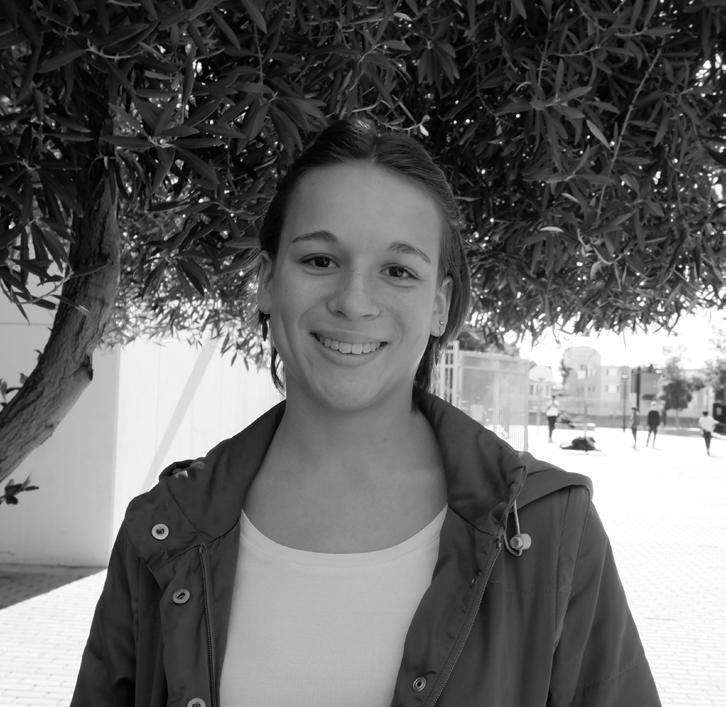
When I was in preschool and told someone they couldn't play with me because they weren't wearing a skirt, my parents took away my skirt drawer for a week. It's what we called a natural consequence. And when a friend told me that in Ancient Rome, the punishment for rape was getting your testicles crushed between two boulders, I thought, “Well, that fits the crime perfectly" This turned out to be false, but the idea and its initial impressions on me stuck.
Some would consider that a gruesome way to start this column, but I'm not saying that we should turn to torture as punishment. The point I'm trying to get at is that punishment strongly dissuaded someone from committing such a crime, and especially a perpetrator from committing it again. Those are rare to find in modern society, as 97 percent of rapists don't even spend a day in jail, and if they do, its often for just a short sentence.
believe that replacing P.E. credits with health credits would eliminate the need for sports, students who would want to opt into playing sports would still be able to. Students who don’t want to use up one of their class periods to take a health class would have the option of joining a sports team, signing up for a P.E. waiver, or doing any of the options currently available to students.
Additionally, nutrition classes improve student mental health. It would be up to the students to decide which option would work best for them.
Adding this class would open up more options for pathways to credit as well. All students at BHS, even those who wouldn’t take a health class, would be benefitted by replacing the P.E. credit system with a health credit system, as it would allow for more options and benefit the mental health of the student body as a whole.
That's a pretty messed up statistic. And the vastness of this issue — of rape, sexual abuse, and harassment — can be overwhelming and seem impossible to change. Sometimes it even feels as if progress is going backwards. Last week, I read a New York Times article about the new Arizona abortion ban that illegalizes abortions from the moment of conception with no exception for rape or incest. It's only the most recent of the 21 states that have restricted or outright banned abortions since the overturning of Roe v. Wade. Things like this can make one feel pretty hopeless. But it's important to focus on the positive impact you can make, because each person who does something makes a big difference.
The Me Too movement was centered around people sharing their stories and connecting with other people through their shared experience. It wouldn't have had any impact if a lot of people didn't join in. It adds up, and your words and actions do matter. So use them wisely. Go to protests for women's rights, reproductive rights, trans rights, general gender equality; boycott large businesses that don't support your beliefs, because when you give them money, you're giving money to candidates who they back. Some companies who gave a lot to anti-choice politicians are AT&T, Chevron, Amazon, and Uber.
People say getting angry doesn't help, that it's not constructive. But the only way things have changed in the past has been when a whole lot of people got so incredibly frustrated that they couldn't not do something, and so decided to do something constructive with that anger. Women in almost all societies have been denied power, stripped of rights, marginalized, and put at a social and economic disadvantage for much of history. Gender discrimination has deep roots and is an inherently political and social issue. It should be irrelevant, but it's not, nor will it be for a very long time. But we can help it get there.
ohadaviranfinkelstein@students.berkeley.net opinion editors: ohad aviran-finkelstein & ysabel chu BERKELEY HIGH JACKET OPINION 5 FRIDAY, APRIL 26, 2024
NATALIA KASS
LUCIA RADILLO
Polarization of politics leads to division in youth
“Americans hold more negative views toward their political opponents than at any point in the last 50 years,” according to a Stanford research lab investigating partisan animosity. Over the past two decades, political polarization has intensified, with individuals on both the left and the right sides of the spectrum adopting more extreme positions. With more people leaning towards the extreme ends of the spectrum, divisive opinions accumulate, as well as damaging perspectives of their counterparts. This partisan divide has led to a concerning trend; nearly every political issue is associated with a specific party. When a stance on a topic is immediately associated as either “left” or “right", individuals are inclined to adopt whatever stance their party has aligned with. At its heart, extreme polarization discourages critical thought and is more harmful than what we see on social media echo chambers.
Managing Editors
Opinion Editors
Features Editors
Editors
Director
Political polarization influences not only adults but children, specifically in an educational setting. Within school, students' attitude toward civic engagement and political participation is altered. Rather than engaging in constructive conversation, students may become apathetic and disengaged with the political process. Others may engage in politics but in ways that deepen this polarization, such as falling into the extreme ends of either side of the spectrum. Without a designated time and place to invite respectful conversation and civic education, schools leave students ill-informed about political processes. In turn, some students may turn to unreliable social media platforms for political education.
According to Shanto Iyengar and Sean J. Westwood in their report "Fear and Loathing Across Party Lines: New Evidence on Group Polarization" published in the American Journal of Political Science, "hostile feelings for the opposing party are ingrained or automatic in voters’ minds," (Iyengar and Westwood, 2015).
A certain level of polarization can be expected with a twoparty system. If someone has a certain bias or belief surrounding the identity of another, a conversation debating the validity of their belief might not be necessary or safe for the people involved. The issue arises when the lack of tolerance extends beyond identity politics to crucial economic, social, and political issues. Inevitably, polarization fosters an “us vs them” mindset. When heightened to extremism, this mindset can be used to justify hateful rhetoric, and in some cases, violence. Schools are no exception.
BERKELEY HIGH
Ella Creane
Marina Howard
Lola Brownlow
Rebecca Birenbaum
Anja Ball
Zoe Fung
Lula Rosenbach
Adrienne Melodia
Gwyneth Fonte
Aaron Stevens Finola Jackson
Ysabel Chu
Ohad AviranFinkelstein
Sage MateoFeldman Tsai
Kaiya SimonJordan Policy
Colina Harvey
Leo Silverberg
Josephine Morasky
Amelia Reed
Aynaz Faruqui
Daisy Howerton
Charley Tamagno
Jared Huang
Zula Root
Sophia Bezakova Santana
Pearl Gibson
Malin Morell
Nolan Whitehill
Alex ElliotMorgan Schrag
Miriam Reichenberg
Zazie Duchene
Katelyn Liao
Drew Henderson
Sophie Pomfret
Zoe Glass
Keely Shaller
Eliot Hertenstein
Talia Rosen Averie Wade Luna Prestia
Nathaniel Brundjar
Peter Rodrigues
Aditya Sridharan, Aelia Gyger, Amar Walker, Amara Kapur, Anna Williams, Annika Joy, Ariana Yerovam, Ava Quandt, Avha Meisels, Carina Thomas, Cecilia Tiles, Clara Tjen, Eliot Perdue, Eloise Thomas, Elsa Dietz, Elsie Yuen, Erin Liao, Eva Dickinson, Eva Katz, Eva Levenson, Hailey Ostrer, Hannah Groth Reidy, Jasper Lovvorn Black, Julius Braun, Kali Proud, Kimia Azadpur, Lucy Griffith, Lucy Hohn, Luli Galinson, Maya Dang, Minami Soga, Muhammad Delgado, Natalie Gross, Penelope Purchase, Rigzin Gyaltsen, Rory Nadeau, Sabine Rosen, Sam Mascarenhas, Shanza Syed, Sophie Dreskin, Sydney Lehrer, Sze Ting Chen, Violet Miller Brady, Yoshi Rohn, Zachary Yoo, Emmett Price, Julia Brimmer, Paolo Rivera, Taylor Reynaud
Photographers
Alex Tripcevich, Ashley Diaz, Atticus LaBang, Divya BenDavid, Emory Ely, Georgia Paulos, Ida Marshall-Lappe, Jahan Ingraham, Jules Droz, Julian Nathan, Kai Hanschen, Kayhan Tezcan, Leo Ostroy Harp, Lev Teiblum, Lila Hallward, Lucas Thompson, Madeleine Wilson, Malina Valdez Meissner, Mei Saphir, Quincy Morris-Fry, Riana Falcioni, Sanam Rozycki-Shah, Sasha Balasubramanian, Shiloh Wilson, Sunny Bevis-Lipton, Toscana Girard Maxon, Willow Priforce, Ziva Amendola, Zoe Kohlmeyer
Illustrators
Alessio Manuel Gilabert-Papagni, Alisa Karin Kolpakova, Anisha Pinto, Anna Howell, Asha Torok, Carina Nottingham, Claudia Bloom, Emiko Aronen, Gwen Weber Stover, Iris Le Liboux, Isa Shimomura, Jay Trauner, Jennifer Yoc Ferreira, Jessie Lee, Jo Purcell, Lucia Radillo, Martin Luis Wagener Gaztelu, Natalia Kass, Oren Stiles, Sabine Shaffer, Sara Teitelbaum
Editorial Policy
The Berkeley High Jacket
decisions.
The by-lined opinions expressed in the Editorial/Opinion and Entertainment sections and columns are those of the writer and do not necessarily reflect the opinion of the Jacket. Non-by-lined editorials represent the opinion of the Jacket and must be approved by a two-thirds vote of the Editorial Board. Any opinions or views expressed in advertisements do not necessarily reflect those of the Jacket. We encourage students, staff, and the community to submit letters to the Editor for publication. All submissions must be signed; anonymous letters may only be printed with a two-thirds vote of the Editorial Board. Not all submissions will be printed and may be edited to conform to Jacket policy or to meet space restrictions.
1980 Allston Way, Berkeley, CA | (510) 644-6121 | www.berkeleyhighjacket.com
UCLA and UC Riverside conducted a national survey of 682 public high school principals titled “The Chilling Role of Political Conflict in Blue, Purple, and Red Communities." The survey concluded that “Sixty-nine percent of principals surveyed reported substantial political conflict over hot-button issues,'' and “69% of principals report that students made derogatory remarks to those expressing liberal or conservative views.” The study revealed that schools are impacted by “political conflict tied to the growing partisan divides in our society” which leads to “limited opportunities for students to practice respectful dialogue on controversial topics.” Additionally, the study noted a decline in support for teaching about “race, racism, and racial and ethnic diversity” as well as an increase in harassment of LGBTQAI+ students within the highly charged political environment.
As Justin Payne, a principal cited in the study, explained, "Public schools mirror society. Our society is more divided than ever before in my lifetime, and that division is reflected in our public schools."
While public schools might reflect societal divisions, they certainly shouldn't remain passive observers to its impacts. Unification can begin with small changes, such as teachers providing guidance on how to approach political conversations respectfully; establishing clubs designed as safe spaces for cultivating political discourse; and eventually, integrating civic education further into school curriculums. While restructuring our democratic process might not hurt, solutions addressing political polarization can begin in classrooms. And maybe eventually, the reflection can be reversed.
Climate action must become more accessible and affordable
BY ADITYA SRIDHARAN staff writer
"Buy an electric car, install solar panels on top of your house, and don't forget to pay for your carbon offsets!" In the grand scheme of combating climate change, the narrative often centers around expensive lifestyle overhauls like these. While big changes can be very effective at combating climate change, they come with even bigger price tags that make them inaccessible to most people.
Even with rebates and incentives, the average price of an electric vehicle is $45,000, and the average cost of installing solar panels in California is around $13,000. On top of that, the required lithiumion batteries lead to the mining of lithium and other elements while releasing toxic fumes and degrading the environment.
The reality is that these costs illustrate a sort of paradox within the world of climate action. Wealthy people are disproportionately responsible for climate change — those in the top 10 percent are responsible for over 50 percent of global carbon emissions — and these expensive 'solutions' are their way of making up for it. Meanwhile, those who contributed least to our climate crisis are bearing the worst of the impacts. According to the World Bank, the world's 74 lowest-income nations have experienced nearly eight times as many natural disasters as wealthier countries in the last 10 years.
Helping the environment
shouldn't be another privilege reserved for the wealthy. Even though the rich are the most responsible for climate change, everyone should have the opportunity to fight against this crisis.
There are many ways in which people can make meaningful impacts on the environment at a low cost. What we eat, for example, can have a tremendous impact on greenhouse gas emissions.
In a study done by the BBC, the emissions associated with a vegetarian, vegan, and omnivorous diet were tracked. While meat-based diets generated around 50 kg of CO2 emissions every week, vegetarian diets generated around 15 kg, and vegan diets around 10 kg. The animals required for dairy and meat products are the cause of large-scale deforestation and the release of huge amounts of methane gas. In fact, an Oxford University study found that becoming vegan was the single most impactful way an individual could help the environment.
Walking, biking, and the use of public transport are also extremely effective. If your destination is walkable
or bikeable, consider increasing the number of times you walk or bike each week. If your destination is too far, public transit is far more ecologically conscious than a car. According to the UN, you can reduce your carbon footprint by 1 ton by using carpool and 3.6 tons by living car-free.
Cultivating a more nuanced approach to climate action is especially beneficial for young people. Changes like these are realistic and relevant to students because most of them haven't become economically independent but are still motivated to act. On top of that, having accessible climate actions will prevent people from thinking they aren't doing enough or feeling discouraged by more expensive solutions.
Overall, helping the environment should never be a question of money or social status. For far too long the climate action narrative has been stuck around expensive solutions that act as symbols of inequality. Changing the way we think about climate action to incorporate less expensive and more accessible solutions is key to making meaningful progress.

OPINION EDITORIAL FRIDAY, APRIL 26, 2024 6
ANISHA PINTO
Editor-in-Chief
is a designated public forum for student expression without prior review by school officials in which students make all final content
Layout
Chief Layout Editors
News
Entertainment Editors Outreach
Sports
Editors
Business
Podcast Executive Producers Copy Chiefs Copy Editors Photo Editors Illustration Editors Faculty Adviser Business Chiefs Web Editor Web Team Investigative Editor Visual Editor
Managers
Writers
An individual choice: Weighing the benefits of a private versus a public college education
BY ERIN LIAO staff writer
The average American spends $223,360 on a four-year private college or university tuition. With such a high price tag, roughly half the price of a U.S. home, some may wonder whether choosing a private higher education can be justified. Both public and private institutions have unique benefits and drawbacks, and whether the cost of private college tuition is worthwhile depends on the specific student in question.
Although the high cost of private colleges and universities may seem ridiculous to students, some of these places actually spend more money on each student than the cost of tuition. For example, according to its website, Williams College spends around $54,400 more on each student than what it charges for tuition. In this way, the cost of private education may be more justifiable or at least more understandable. Additionally, at some private institutions, many students will never pay the full fee and will instead be covered by some amount of need-based or merit-based financial aid. Need-based financial aid awards aid based on students' financial situations, while meritbased aid is determined by a student's academic achievements. Harvard, for example, gave need-based aid to almost 60 percent of its class of 2025.
The decision to go to a private university also depends on the field a student is planning to enter. Vanderbilt's medical engineering majors have median earnings of $94,340 four years after they graduate. On the other hand, English language and literature majors earn $53,767 annually. Private institutions often yield higher economic returns for science majors than for the humanities, making a student’s intended major something to consider when evaluating the price of a college. There is also some evidence that on average students who graduate from private colleges go on to earn more on average than public college graduates. A report from the Georgetown Center on Education and the Workforce found that attending a private nonprofit college led to economic gains of $838,000 while attending a public college led to economic gains of $756,000.
However, in order to afford the cost, private college attendees tend to borrow more than public college attendees. According to U.S. News, students who graduated from a private college in 2022 borrowed $23,627 compared to public school graduates who borrowed $20,371. The increased amount borrowed could lead to more debt for private college attendees, potentially canceling out the increased earnings.
But post-college income is certainly not the only factor to consider when making college decisions; educational values of the school are also important to consider. A 2015 study by the Council of Independent Colleges found that private institutions’ coursework was, comparatively, more likely to emphasize “high-order learning.” High-order learning consists of learning how to analyze several pieces of evidence and different points of view and draw new ideas from them.
However, it is worth considering that
attending a public college, which is often more diverse than its private counterpart, may better lend itself to “high-order learning” in everyday life. Being surrounded by people with different backgrounds and experiences may naturally help students understand different points of view and form their own ideas and opinions.
One of the largest advantages of attending a private institution is that it's easier for students to build close-knit relationships with peers and professors. While this is also possible by attending many public universities, building close connections with professors and peers in a larger environment can be more difficult. This could make attending a private college particularly worthwhile for more quiet or shy students whose learning could benefit from knowing and feeling comfortable with everyone in their community and classes. According to College Transitions, the top ten feeder colleges and universities to PhD programs, adjusted for the size of the institutions, are all private colleges. This could partly be due to the small school size which enables close relationships between students and faculty, though the cost and accessibility of graduate programs must be taken into

consideration as well.
Yet in other instances, the large size of public universities can lead to distinct benefits. Meeting a like-minded community and finding niche activities that suit your interests may be easier. Additionally, public universities’ size also makes them more likely to offer uncommon majors that interest students and the wealth of faculty might allow undergraduates to take advantage of more research opportunities.
Both private and public institutions have unique benefits and can provide healthy learning environments for students to grow. At the end of the day, whether a private education is worth it depends on the specific student and their needs and desires.
As Berkeley High School senior Kea Morshed, said, “I think that any school you go to is what you make of it. Big, small, private, public, I really don’t think going to a certain university guarantees you anything unless you put in the work and use its resources to their maximum potential.”
OPINION FRIDAY, APRIL 26, 2024 7
ISA SHIMOMURA
investigative editor: JOSEPHINE MORASKY
Modern day implications of BPD history and police tactics
BY SYDNEY LEHRER staff writer
Berkeley’s Police Review Commission, established in 1973, is thought to be the first civilian police oversight agency with investigative powers in the country. In the time since its creation, the Police Review Commission has been replaced by the Police Accountability Board (PAB), a board made up of appointed Berkeley citizens who review policing policy individual complaints of misconduct in Berkeley.
The PAB works with the Office of of Police Accountability (ODPA), supports the PAB by acting as its administrative secretarial support, in addition to hiring two full time investigators that conduct investigations into accusations of police misconduct.
Berkeley explained one of the negative impacts of an increase in police professionalism.

The PAB has acted as a bridge between the community and the police, Hansel Aguilar, Berkeley’s Director of Police Accountability, explained.
The first police chief of Berkeley, August Vollmer, “is known as the ‘Father of Modern Policing’ for instituting innovations like mobile policing, and police departments around the country began to copy him,” wrote sociologist and biographer Julian Go in an email to the Jacket. Go is the author of ‘Policing Empires,’ a book exploring the history of policing in Britain and the US.
Vollmer was also instrumental in creating a school of criminology at UC Berkeley, according to Andrea Prichett, a founder of Berkeley Copwatch. Berkeley Copwatch is an organization focused on monitoring police activity for misconduct.
The criminology school, Prichett added, “was meant to kind of advance policing techniques, try to make it more scientific, more evidence based,” Pritchett said. “On the other hand, it was still very based on race and this notion that there are certain populations that are more prone to criminality than others.”
Emilie Raguso, the Editor-In-Chief of the "Berkeley Scanner" and a crime reporter, explained the observed impacts of the BPD emphasizing education.
“I do think for the most part, what I've witnessed is Berkeley historically required ... officers (to have) more education than many police departments require,” Raguso said. “They put a big emphasis on de-escalation. So they will spend a lot of time trying to talk people down, as opposed to for the most part rushing in. I can always think of a counter example because I've been doing this for so long, ... but they try to keep it calm and just talk to people ... And I don't know if that it's maybe in part due to if you have people who have had other careers where they have more education.”
“He was credited as being something of a progressive,” Pritchett said when describing the national perspective of Vollmer. “I think there were times where the Berkeley Police Department did pride itself on being more professional, knowing that they required a college degree when a lot of departments didn't even require an Associate of Arts degree ... (Vollmer also) started to introduce things like using fingerprints (and things likes) bicycle patrols.”
Nikki Jones, a sociologist, criminologist, and professor of African American studies at UC
“One of the things that commitment to professionalization has done has actually made police officers less accountable to the public because have been kind of constituted as these experts of crime and safety,” Jones said. “What we've seen as police officers have been becoming more professionalized is that the concerns of the community, ... they're dismissed by the police, police officers, and police unions, who tell us that they're the real experts on crime and safety that is in their domain.”
Pritchett described another finding of her research on August Vollmers influence on policing.
“Going back to August Vollmer, one of the things that he was fairly influential in was bringing army tactics to policing,” Pritchett said. “ I think police have most definitely gotten militarized. And I think part of what that looks like to me is the idea that police don't necessarily even come from the community that they're patrolling. The police (have) taken on this kind of character of an occupying force.”
In November of 2022, the BPD came under scrutiny when texts shared by a former officer on the BPD’s bike force showed bike force officers making racist and anti-homeless comments. Although the PAB’s investigation is still under way, Berkeley Copwatch released an investigation in January in which they provided data showing that one in two people arrested by the BPD between and 2022 were Black, in comparison to an 8 percent overall Black population in Berkeley. Their investigation pointed to this as evidence of “extreme racial disparities in policing.”
“The city of Berkeley has actually had a really intensive examination of their policing
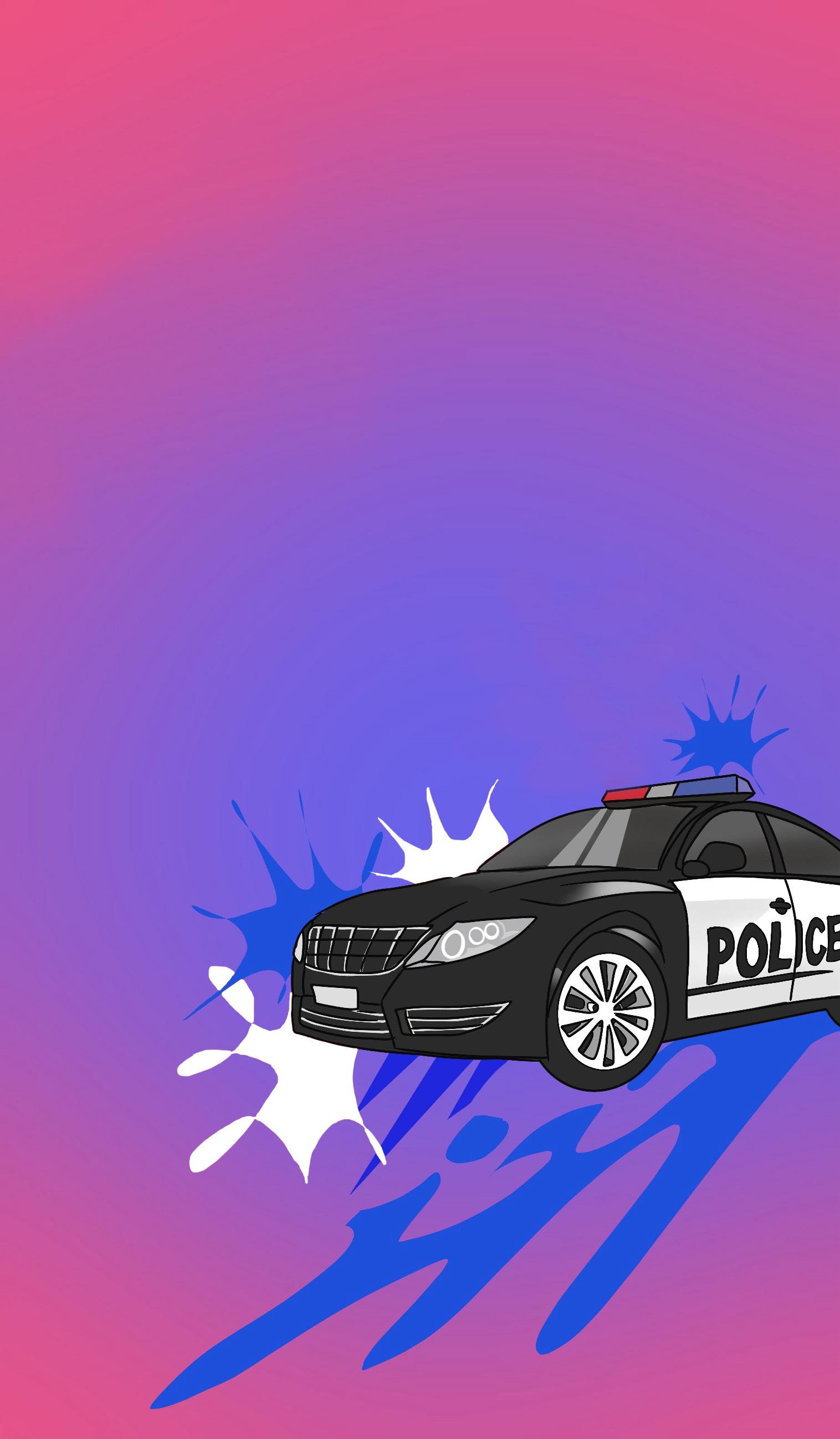
Vollmer’s teachings.
“People can think that we don't have those kinds of problems in Berkeley or San Francisco or the Bay Area, because we're otherwise a liberal (and) thought to be a very liberal and progressive place,” Jones said. “But I think that that kind of veneer can actually hide some of the ways that these legacies show up in everyday life. Some of the racial (and) pretty persistent racial disparities we have.”
Aguilar explained the importance of revisiting the creation and history of institutions.
“I think, especially when we re-examine a lot of our leaders and a lot of the pioneers in our field we’ll see that they're flawed individuals,” Aguilar said. “So I think that we need to be honest about the individuals whose ideas we’re utilizing for our systems, or institutions.”
In the 60s and 70s, the Black Panther Party was pushing to put initiatives on the ballot in San Francisco, Oakland, Richmond, and Berkeley that would create community control of the police. Although the original proposal to control policing through the division of Berkeley into three smaller jurisdictions (Berkeley Hills, West Berkeley, and university and downtown business district) failed, a later proposal passed, leading to the creation of the Police Review Commission in Berkeley.

“Berkeley actually was one of the first cities in the country to have civilian review of police,” Prichett said. “And cities all across the country called up Berkeley and wanted to know how they did it, why they did it, if they could do it in own cities, and stuff.
Berkeley was

quite a leader,” she added.
practices and their approaches to community safety itself,” Pritchett said. “And they came up with a bunch of recommendations about how we could do things differently that might make better safety in our city (and) that might make people feel safer.
I think there were some great recommendations there, but the city hasn't really implemented them.”
According to Berkeleyside, Vollmer was also a eugenicist, and supported the belief of selective breeding of people to uphold certain ethnic and racial genetic traits.
Jones explained that Vollmer’s eugenics beliefs are similar to what she would imagine many police chiefs having at the time period, due to the “prevailing ideology of whiteness and the prevailing racial ideology of the time.” Nevertheless, the effects that these ideologies had on policing is extensive, according to Jones, who pointed to “concerns over racial profiling and concerns over racially disparate practices or practical practices that have a disparate impact on communities of color” as lasting effects of
In the past 50 years of civilian oversight of police in Berkeley, “there's been a lot of victories, but also a lot of challenges and obstacles throughout those years,” Aguilar said.
“It's been a pretty slow process to actually get up and running,” Raguso said. Furthermore, the scope of the board, as outlined in the city charter, is very broad, according to Wilson, leading to many unanswered questions about the specific powers of the board. “There's some challenges with the charter and a lack of clarity within the city about exactly what's the authority and the level of interdependencies of the board,” Wilson said.
Despite these challenges, the role of the Police Accountability Board and Office are what Leah Wilson, a PAB member, described as, “critically important.” Wilson said, “We provide a really important check and balance on the police and that this community knows that we exist.” She added, “It's an important accountability measure to have an independent board, and it seems to me that it's something that every jurisdiction of any meaningful size needs to have.”
INVESTIGATIVE 8 FRIDAY, APRIL 26, 2024
JOSEPHINEMORASKY@STUDENTS.BERKELEY.NET
INVESTIGATIVE
JAY TRAUNER
BHS students, staff grapple with learning accommodations
freshman year.
school counselor, your parents, and maybe some of your teachers to problem solve and troubleshoot what's going on,” explained Nina Garrovillo, a BHS school psychologist. After an SST, the student is offered different resources and support before they’re given a 504 plan or an IEP.
According to Sinai and Garrovillo, if the student isn’t showing signs of improvement after being offered those resources, more steps are taken to help the student get a 504 plan or an IEP.
A BHS student with an IEP, who wished to remain anonymous because they didn’t want to disclose their diagnosis publicly, explained what their personal process of requesting an IEP looked like and the timeline, “653 days. But who’s counting?” The anonymous student said. The student continued explaining their worries about the accessibility of 504 and IEP accommodations.
“I know a lot of people who have gone through the same thing,” they explained.
“From what I remember from freshman year, it didn't take too long to get the 504 plan,” Chambers wrote in an email to the Jacket. However, Chambers emphasized that she had pre existing knowledge of the process because her older sibling had accommodation plans at BHS. “I think it only took a couple meetings for it to get set up … The longest part of it was waiting for things to get signed and more technical stuff … I didn't really experience any significant challenges in the process, but I want to emphasize this was my personal experience,” Chambers wrote.
Garrovillo explained that many factors are taken into account when evaluating the eligibility of a student, saying, “We will do a full assessment on students’ processing. So looking at their learning profile, how’s their memory? What about attention, or visual or auditory processing? All of those things are taken into consideration.”
“We’re serving a huge community at Berkeley High (School), and we need to make sure that students who really need that total access are really getting it.”
Vanessa Sinai BHS 504 Program Supervisor
In FangStillman’s case, she had to apply for a 504 plan at BHS after transferring from another school. “When I first put in my request for a 504, I was denied by the school,” Fang-Stillman said. “I also attended the meetings to talk about my 504, and why I needed it, and I felt like I wasn’t being listened to as I was stating my needs and how it affected me as the student … I remember feeling really hopeless. I hadn’t not had a 504 or accommodation plan since I was eight.” After two months, FangStillman was granted a 504 plan.
Wren Chambers, a BHS student with 504 accommodations
Sinai explained that medical diagnoses aren’t required to get either plan, as a student can be simply ‘regarded’ as having a disability and still receive accommodations.
“The ‘regarded as’ is super important, because it’s an equity issue. If a student doesn’t have the resources to go get a whole neuropsychological evaluation, or to go to the doctor to get an official diagnosis, they could (still) be regarded as having an impairment,” Sinai explained.
Having the resources to obtain a medical diagnosis is not the only equity issue that arises in the accommodation plans process, according to Sinai.
“The data shows that students who have more resources, have 504 plans and have gotten them more
centered.”
There are over 305 504 accommodation plans at BHS, according to Sinai.
Garrovillo explained another way in which resources, previously allocated for students who need them, can be misused.
“I deal a lot more with parents who are looking for more support for their students, and sometimes think that special education is like tutoring. But it's not,” Garrovillo explained. “It's not to help students get A's, but rather for students to be able to learn.”

The implications of diverging resources can also harm students who might not know they need accommodations, according to Garrovillo.
“If we as a school are spending time assessing students who don't need the services, that means we're missing finding the kids that do need it,” Garrovillo said.
Three years ago BHS created the position of 504 program supervisor and hired Sinai, in an attempt to address this issue.
“In the past, 504 plans were solely managed by the counselors, but it became too much work for them on their caseload, so now I can sort of manage the program of 504s,” Sinai said.
caseloads of up to 20 students, depending on the demand, Garrovillo explained. “Not having enough case managers can impact how quickly and efficiently we're supporting students,” she said.
The anonymous student described their initial attempt at getting an IEP plan through BHS. “(Someone in the special education department) gave a report of her findings to my parents and an IEP team, and decided that I’m not eligible for an IEP,”
The anonymous student continued, “I got a medical diagnosis (of autism) in April 2022. Then in June, (the school said) … I (still) do not qualify for an IEP.” The student explained that their high grades did not reflect their difficulties within the school environment, something they believed was misinterpreted by the school when determining their qualification for an IEP.
“I missed about 800 (class periods) before I got my IEP, … in that span of 653 days where they didn’t give me an IEP, from application to actually getting it,” the anonymous student said. “I was very disturbed emotionally, … and I didn’t have the resources to navigate it.”
“Not having enough case managers can impact how quickly and efficiently we're supporting students.”
Nina Garrovillo BHS Psychologist
Sinai continued, “We’re serving a huge community at Berkeley High (School), and we need to make sure that students who really need that total access are really
The student explained that without the IEP they didn’t have access to resources such as speech therapy and occupational therapy through the school, tools which they had been hoping to benefit from. However, through external evaluations, the student was eventually able to qualify for an IEP.
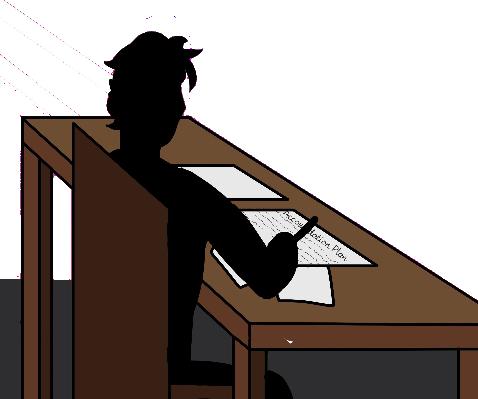

9 FRIDAY, APRIL 26, 2024
JAY TRAUNER
CONTINUED FROM PAGE 1
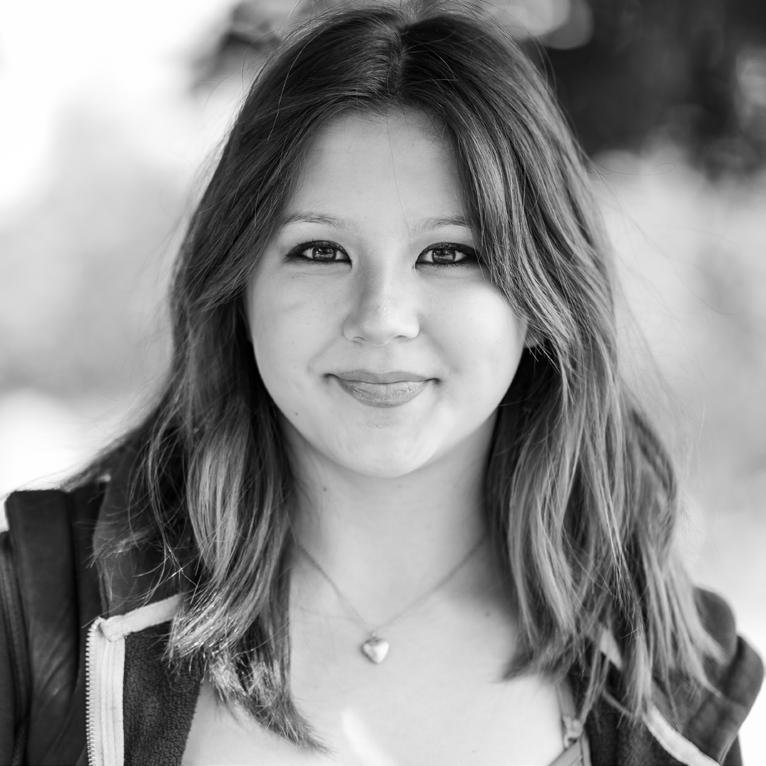
Every sad movie is bound to make me cry, which is why I can never watch them. The dog will die, the wife will get dementia, the brooding bad boy will get cancer or another terrible disease, and the tragedy will drive them apart. I sometimes question how this narrative structure even works. You fall in love with the characters, conflict is introduced, conflict builds, character development grows, conflict climaxes, and then it ends. A sad ending dissatisfies you on purpose.
To me, this is much like music resolution. The whole concept of it is to move a chord or note from an unstable sound, dissonance, to a final, stable sound — consonance. The suspense is used to make the music more interesting, but it’s all complete at the end of the piece. Nothing is left unresolved. Sad movies are like if you played almost the whole scale, but not the last note. You almost give the audience what they want, and then you snatch it away.
While change is inevitable, and everything is temporary, sad movies make you wish that they were not. Cinema is fictitious, and then it gives you that harsh of a reality check. People can lash out on movies that make them feel things, or they can try to change.
When I watched ‘Toy Story 3” for the first time, I brought all my stuffed animals onto my bed and vowed to never give any of them away. Now they are piled in the corner of my room in a basket while I cling onto the strings of childhood that Andy found a way to let go of. When I saw Miyazaki’s classic ‘The Tale of the Princess Kaguya’ my mom had to carry me out of the Parkway because I was so enraged by how unfair the story’s end was. I felt that nothing was resolved and no one was happy.
Strangely enough, according to studies done at Ohio State University, the “tragedy paradox” phenomenon found that watching sad movies might lift your mood in the long run. The study found that people are more likely to reflect and feel happier about their lives. They had 400 undergraduate students watch a segment of the 2007 film ‘Atonement’, about two young lovers torn apart by a lie. The researchers found that the participants felt happier after watching, not because they were glad their romantic lives were better than the characters in the movie, but because it caused them to reflect back on how their loved ones positively impacted their lives. What if Titanic’s Jack and Rose could have fit on the wood panel together, One Day’s Emma never got hit by a car, The Fault In Our Stars’ August’s cancer went away, and Five Feet Apart’s Will and Stella’s doctors found a cure? These tearjerkers force us to recognize that life isn’t fair, love isn’t permanently engraved in hearts, and time moves on — and we must deal with loss. We look it in the face, we say you are here, you are inevitable, and so we will live.
Student teaching provides inimitable learning experience
BY AELIA GYGER staff writer
In order for a person to become a teacher and be able to teach students, they must obtain their credential, pass tests, and spend 600 hours as a student teacher. This unpaid work is what lets aspiring teachers find their own teaching style.
The experience of teaching a room of students is something that can be tough, but that must be experienced in order for a student teacher to become a full-fledged teacher. “That’s just part of the training,” Timothy Finnigan said. Finnigan is a current substitute at Berkeley High School who was a student teacher last academic year and found the experience of being able to teach for about a semester to be highly beneficial for him.
“There’s all of these pedagogical techniques (which you learn about teaching),” Finnigan said, “(but) you can go to formal school, you can learn pedagogical theory, but until you step foot in a classroom
in the field, and deliver instructions, and have to come up with content … none of that stuff comes through when you’re just clicking through modules online and watching tutorial videos … The most valuable experience of grad school was 100 percent just diving into the classroom.”
According to Finnigan, the discussion of how much control the student teacher has over a classroom comes from a “negotiation between (the student teacher) and the teacher about how much of their class they’re willing to give up to an absolute novice.” Student teachers, for example, may completely teach for half of a semester or they may teach half of the class on any given day — they are often given a lot of flexibility to find out what method of teaching works best for them and for their students.
“There’s a lot of more freedom. And I feel like I can do a lot more than the regular teacher would be able to do,” Janelle Jajeh, who is on her second semester as a student teacher, but her first semester as a student
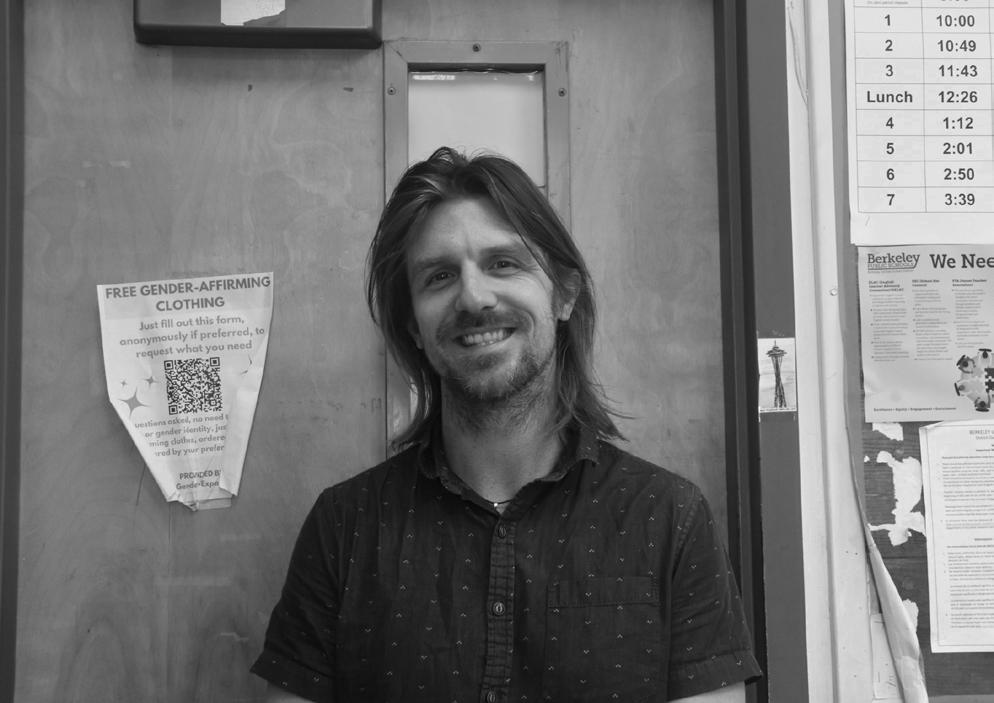
teacher at BHS, said.
Being able to experience the classroom is also helpful for teachers to acclimate themselves to their new career, especially as not all student teachers started their career by teaching.
Jim Morehead, a student teacher for Universal 9th Grade physics and AP Physics C, originally used physics in a professional setting, working at a company that developed lasers. He worked there for over 20 years before he decided to become a teacher. Before teaching at BHS, he taught physics to UC Berkeley students for four years, though this is his first year teaching high schoolers.
“It’s different. Certainly. It’s a big shift,” Morehead said, comparing this job to his previous careers. Yet, despite the change, Morehead decided enter teaching. “I’ve been pleasantly surprised,”
Morehead said, “(and) shocked in a good way. The students are nice and respectful, and we have a good time.”
Originally Jajeh planned to teach elementary school, but changed her mind halfway through the year, focusing instead on high school.
“I was scared at first because I feel like I’m not far outside of high school myself, so I was a little intimidated to be with older kids ... but once I got to work, I really enjoyed it here. The kids are all very respectful,” Jajeh said. “Because (the students are) older, they’re more independent, and so we can do a lot more learning and discussing. It’s just been really fun.”
Working in the classroom not only allows student teachers to become better teachers, but also lets them adjust to a new environment, finding out their personal teaching style.
WORD ON THE STREET
What are your plans after BHS?
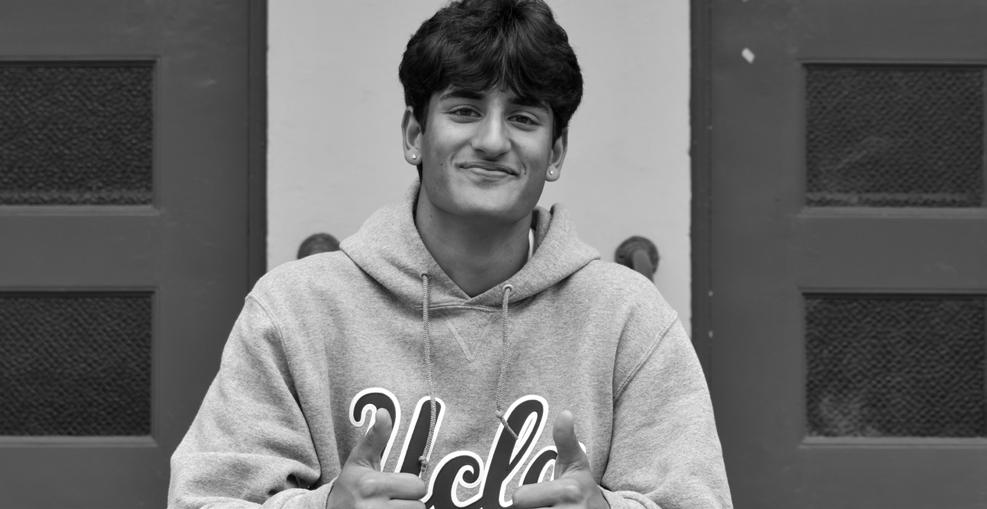
Luca Mirza, a senior in Academic Choice, hopes to combine his passion for biology and psychology into a neuroscience major. “(Neuroscience) opens up a pre-med path or a research path … I (want to) use what I learn ... to help people,” he said. With applying to college behind him, Mirza wants to travel and spend time with his friends.
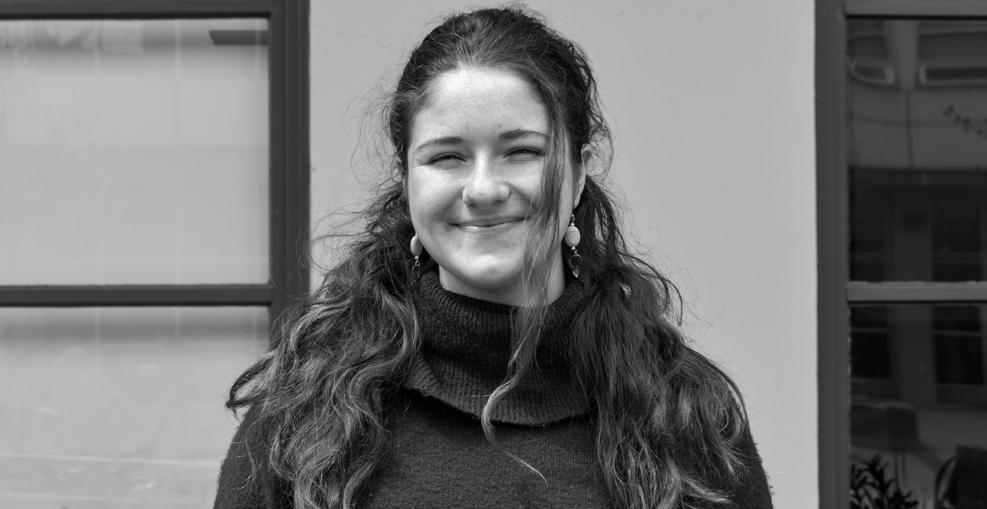

“Being a mental health peer educator helped me connect with people and gave me something to do that I genuinely enjoy … I wouldn’t want to cut (that) short,” said Ebony Elebeck, a Berkeley International High School senior who sees a future for herself as a youth counselor. She plans to “spread her wings,” and study out of state.
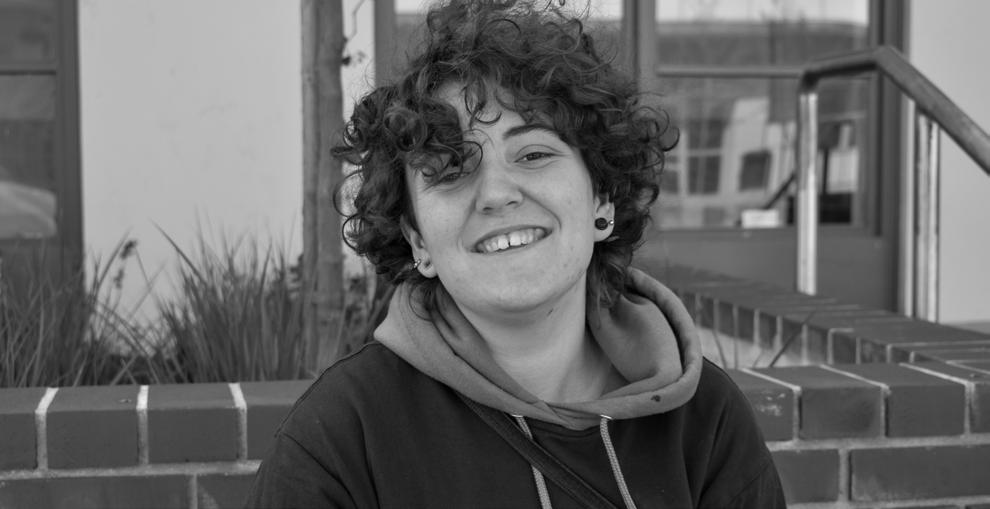
Communication Arts and Sciences senior Max Swim, who grew up hearing English, Spanish, and German, hopes to go to college internationally to pursue a major in linguistics. “I want to be able to talk to as many people as possible. Growing up in a family that spoke multiple languages, it’s really easy to see how difficult language barriers make it for people to connect,” Swim said.
FEATURES
10 FRIDAY, APRIL 26, 2024
ITS OK TO CRY AT MOVIES: IT’S ACTUALLY GOOD
AMELIE SHEARS
Timothy Finnigan worked as a student teacher at BHS. RIANA FALCIONI
FOR YOU
Emma Claus, an Academic Choice senior, is going to college as an undeclared life science major. “Everything about life and being able to live, … understanding why things happen and how everything is built up really fascinates me,” Claus said. During her time in college, she also hopes to go abroad to expand her world view and experience different cultures.
INTERVIEWS BY SHANZA SYED staff
PHOTOS BY SUNNY BEVIS-LIPTON staff
writer
photographer
Teachers new to BHS, one year later: What have they learned?
BY ANNIKA JOY staff writer
“Because it’s a big high school, you don’t know who to ask for help, but so far, Berkeley (High School) has been doing a really great job. We have some great mentors and great co-leader teachers that have been helping me in guiding me in all of this crazy process,” Angie Soto, a firstyear Spanish teacher at BHS, said. BHS can be a difficult place to adjust to, both for
first-year students as well as teachers. Halfway through the second semester, teachers have settled in and have grown accustomed to working at BHS. The adjustment can be more difficult when a teacher hasn’t previously worked in a high school environment. “I’ve definitely settled in more than I had at the beginning of the year, but just in terms of the workload, high schools have more instructional minutes than middle school,” Justin Valencia, a first-year History
teacher at BHS who previously taught at a middle school, said.
“Coming from a middle school environment is something that I’m still kind of adjusting to in terms of the level of freedom that students have, for better or worse.”
Creative freedom at BHS is one of the things that makes it unique. Valencia expressed his admiration for the different student-run extracurriculars and performances that happen at the school. “Students are all invested in all these different extracurriculars, and being

exposed to that and just seeing how that reflects into school culture is nice,” he said.
As well as settling into teaching practices, new teachers have also been working on decorating their classrooms this year, and making them their own. “I think my classroom has always been very settled, and I usually like to have like some nature touches around,” Soto said. She has also tried to incorporate student interests into her classroom. “Some of my students really love singers like Sza and Tyler the Creator, so I have been enjoying adding that into my class,” Soto said.
that. “(I’ve been able to) have these really great, rounded discussions with the students, not just about stuff on the curriculum, but stuff outside their curriculum about current events,” Valencia said. “There’s
“(I like) being able to talk one on one with my student and ... getting to know them for their interests.”
New
Valencia has decorated his classroom to show off some of his interests and hobbies. “I’m just a big maps person; I like to put maps all around the room, and I have a picture of a single scull because I used to row in college,” he said.
New teachers also have personal goals they’ve been working towards this school year. At the beginning of the year, Valencia expressed an interest in exploring more difficult topics and opening class discussions, and now towards the end of the year, he feels he has accomplished
Angie Soto
BHS Spanish Teacher
been a few times this year, particularly on social issues, where I’ve had some really great discussions with students that would not have been able to happen in my old school.”
Soto’s goal this year was to connect with and get to know her students, and that has felt like one of the most important parts of her job.
“I’m very proud of being able to create those connections that I wanted to create at the beginning of the year, and the fact that maybe my students have been enjoying my classes,” Soto said. She enjoys getting to know her student’s interests and incorporates them into her teaching when she can.
“(I like) being able to talk one on one with my students and kind of getting to know them
for their interests, and what, from their interests, I can add into my classes,” Soto said. The sense of community and connection with her students is something else that Soto has found to be unique about BHS. “So far in Berkeley High (School), I have been feeling respect from my students to me not only as an adult, but as a human,” Soto said. She spoke of difficulties at her previous school with getting students engaged with her lessons; “It was a lack of interest, not only for you, as a teacher, as a person, but also for the subject. Here at Berkeley High (School), I have been getting used to my students asking me, ‘How am I doing?’ or checking on me, and that’s something that I really appreciate,” she said. It is important for BHS students to remember that teachers also go through a hard transition and they deserve the same kindness that anyone else does. “I really appreciate being in a caring environment where my students not only see me as a teacher but as someone that is also a human that has problems, responsibilities, etc.,” Soto said. “Keep checking on your teachers.”
BHS athletes who commute for sports face long road to the top
BY CARINA THOMAS staff writer
Some Berkeley High School students travel to Orinda for soccer, Dublin for lacrosse, or San Francisco for volleyball. Three students in particular travel even farther, to San Jose, driving over an hour to regular practices three days a week.
in terms of transportation in order to play for the Sharks.
“Commuting from the East Bay to San Jose can be (about) an hour if there’s no traffic,” said Johnson, “(but) sometimes we’ve had to turn back because we were already in the car for two hours and we
with hockey further by continuing to play her sport through college.
“There (are) people who come from two and a half hours away ... I don’t know how they do it.”
Savannah Johnson, a senior at BHS, initially began playing hockey for the Oakland Bears hockey team, based closer to home. However, over time, the team did not seem to be serving Johnson’s competitive spirit, due to the club’s limited opportunities for female players. “I was getting stuck at these low level teams that weren’t enough for me,” said Johnson. “I’m not allowed to play on varsity because it’s contact and they don’t want girls to be playing with six foot guys,” Johnson said.
Wanting a more competitive sports environment, Johnson made the decision to join the San Jose Sharks hockey team, which has its own designated competitive girls program. Johnson noted the sacrifices her parents have had to make
Mia Sieminski BHS Soccer Player
were only in Fremont.”
The sacrifices she and her family have made to do the trip to San Jose has taught Johnson essential time management skills as a student and athlete.
“There were times where I did not set myself up to leave on time, and I missed half of my practice,” Johnson said. “I’ve had to learn how to organize my day and my time better because I wanted to prioritize this team.”
Prior to joining the Sharks, Johnson saw her future in hockey playing in an adult league or another noncompetitive setting. However, after playing for a team with higher commitment to the sport, Johnson discovered her desire to take her involvement
On the other hand, some other BHS students develop plans to play their sport in college earlier on. Teammates Terren Davis and Mia Sieminski, both sophomores at BHS, play for Bay Area Surf, a competitive soccer team based in San Jose. The team competes in the Elite Clubs National League (ECNL), a league with strong college exposure in the form of nation-wide showcases and top level training environments. “The last Arizona showcase that we went to, there were like forty coaches at each of our games, so that was really helpful,” Davis said.
Due to the team’s uniquely high level of play and collegiate opportunities, Sieminski and Davis are not the only ones who travel far to attend trainings and games. “There (are) some people who come from two and a half hours away ... I don’t know how they do it,” Sieminski said. Teammates coming from various locations leads to difficulties with team bonding, as the only time the team really spends together is during practices, games, or
tournaments. “It’s definitely more challenging when you can’t really hang out with them outside of soccer,” Sieminski said. Thus, the teammates take full advantage of any time they are able to spend together. “I just try to talk to a lot of people at practice and hang out when I can,” Davis said.
In addition to being part of the ECNL, the club also offers other benefits that make
it unique to other, more local soccer teams. “I really like the play style and the coaches ... It’s more possession oriented and focuses on building up before going to attack,” Siemenski said. The team’s strategic philosophy and successful competitive reputation makes it a good fit for the players. “It’s really good to be challenged every day at soccer so you can keep working to get better and
try to achieve your goals as a soccer player,” Siemenski said. In the end, it’s the dedication, passion, and love that Davis and Sieminski hold for soccer that in turn contributes to their continued commitment to their team in San Jose. “If you really love the sport, then do whatever it takes to keep playing the sport. For as long as you want to,” Sieminski said.

FEATURES ALEX MORGAN 11 FRIDAY, APRIL 26, 2024
JULIAN NATHAN
Angie Soto shares that she appreciates the students who check in with her.
ENTERTAINMENT
GLOBAL ARTISTS: ZENG FANZHI, MASKED PORTRAITURE
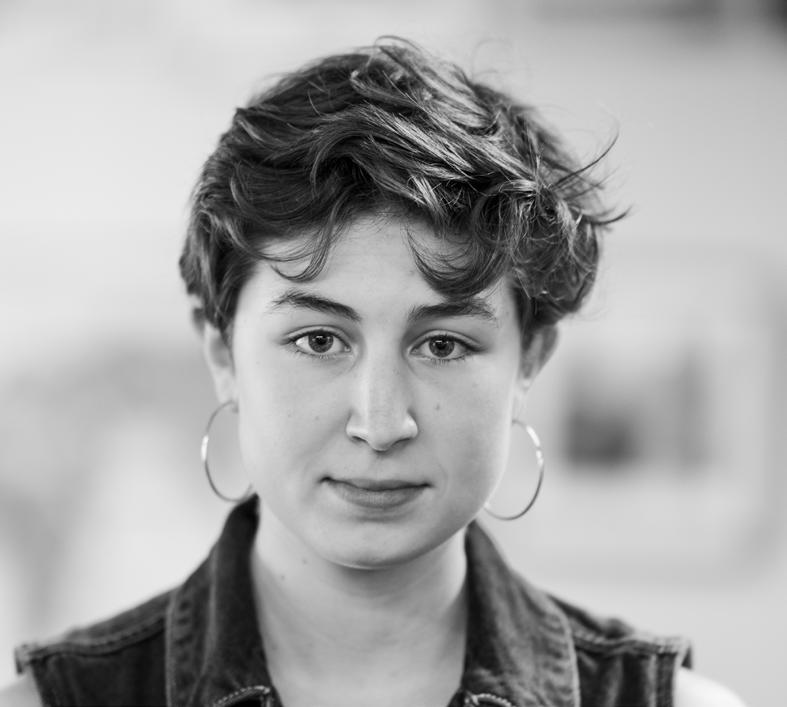
Portraiture is a common motif in art — the human figure and face is just too compelling to stay away from for many artists. But what I love about art is that every single artist, especially contemporary, paints a different portrait. No one sees the human form in the same way, paints it in the same light, or captures it in the same lens. One artist in particular, Zeng Fanzhi, gives portraiture a twisted, hauntingly beautiful flair.
Fanzhi was born in Wuhan, China in 1964, graduating from the Hubei Institute of Fine Arts in 1991. Fanzhi came of age as an artist during a time of great social change and artistic revolution in China — the New Wave movement, essentially a national backlash to the Cultural Revolution — a period of sociopolitical upheaval, characterized by violence. China was also rapidly industrializing.
The New Wave movement was the start of Chinese contemporary art. Along with this movement, Fanzhi also credits his inspiration to both traditional Chinese and Western artists, specifically masters of expressionism and romanticism like Max Beckmann and Willem de Kooning.
Fanzhi’s pieces are often visceral and very defined. Carefully placed brush strokes keep his figures elevated off of the background, emphasizing them with rich colors and lines. Some of his earliest work, Hospital Series (1991) and Meat Series (1992), are very reminiscent of 20th century expressionism — thick strokes and bold colors. Meat in particular is visceral but calm, realistic but highly stylized, evoking Beckmann’s brushwork but very much Fanzhi’s own.
In the 90s, Fanzhi started the Mask Series. The Mask series is both a part of the rapid modernization of China, as well as a criticism of it. In each piece, a figure is wearing a theatrical-type mask. Fanzhi imbues these masked figures with so much emotion — pain, anger, melancholy, joy — that the mask is almost irrelevant. The figures are clearly Chinese but dressed like Westerners in suits and ties, capturing how Fanzhi felt that China was changing too much too quickly, that in an attempt to make a new national identity, China was losing all of its old one.
Stylistically, the pieces are also gorgeous. The details on the figures are stunning and the raw emotion that Fanzhi invokes in each of his portraits is incredible. Many of the facial features are exaggerated or emphasized in some way, but the eyes are especially so. They are piercing and soulful, portraying as much emotion as the faces (or masks) themselves. Fanzhi captures the human face in a way that seems to capture the essence of the emotion itself, and it’s absolutely amazing.
BHS Fashion Show rocks sustainability
CONTINUED FROM PAGE 1
The third annual fashion show not only highlighted creative, eco-friendly outfits, but also promoted sustainable practices and reducing the environmental footprint associated with socalled “fast fashion” — the cycle of buying new items that contributes significantly to carbon emissions and
upcycling old clothes,” said Maya Widholm, a BHS senior who helped organize The Fashion Show and designed some of the clothes. “They might cut off a sleeve or make it into shorts, and other people used fabrics from thrift stores and bought secondhand fabric.”


Another designer and organizer of the event, Isabel Rodriguez Gerstein, also a senior, used donated fabrics from a BHS teacher to create her pieces of clothing. Alongside the show, student artists also sold their work. The fashion show is a fundraiser for Remake, an organization whose mission is to put an end to poor treatment of garment workers.
About 93 percent of fashion brands don’t pay garment workers enough to lead a healthy life. And of the 74 million garment workers globally, 80 percent are women of color, and many are also disproportionately affected by floods and heat from climate change in the regions where they
Calliope Cameron, a BHS freshman who

attended The Fashion Show, was very impressed by the designs, “I really enjoyed going to the BHS fashion show,” she said, “I went to shoot for my photography class, and I didn’t expect for it to have a big impact on me, but I was blown away by the creativity of the designers. Some of the outfits were incredible, and I definitely felt inspired to continue to support thrifting and local fashion.”
The event was supported by the BHS Development Group, which aims to support and strengthen the educational experiences of all BHS students.
Widholm and Rodriguez Gerstein also organized last year’s show, but neither plan to pursue a career in fashion. However, they say other students who participated have been inspired and are planning to go to fashion school.

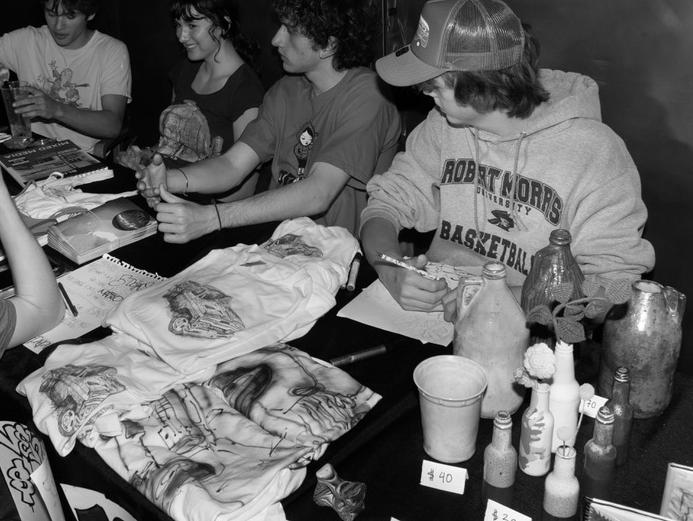
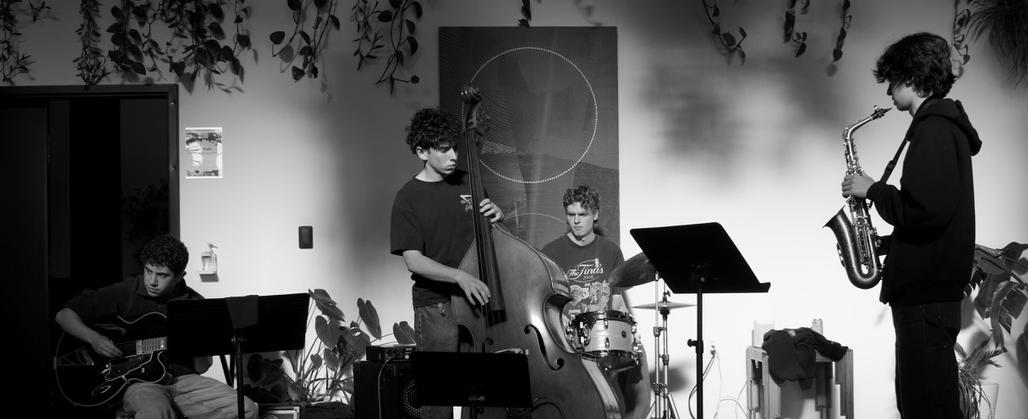
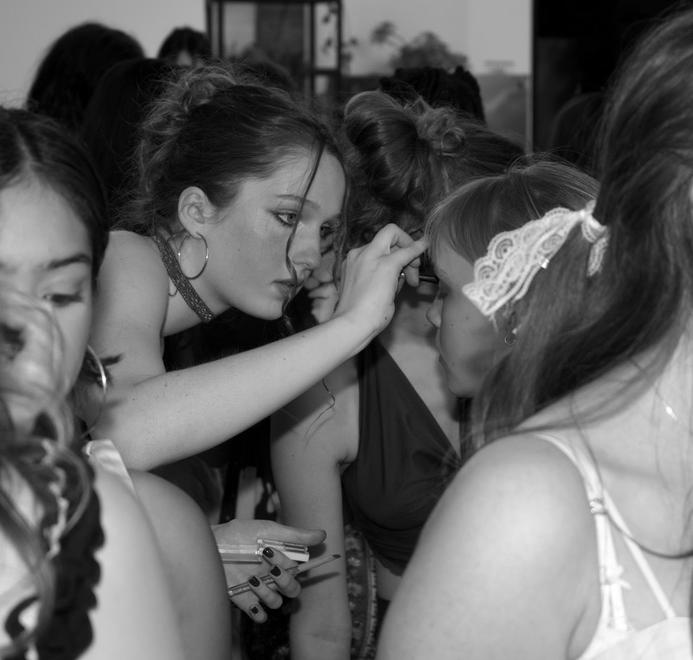
MAILE MATUBREW kaiyajordan@students.berkeley.net Entertainment editors:
BERKELEY HIGH JACKET
Kaiya Jordan & Simon
Policy
FRIDAY, APRIL 26, 2024 12
PHOTOS COURTESY OF LINDEN KOSHLAND
Models wait in line for a dress rehearsal prior to the show.
Sam Wise, Cole Stark, Reuben Zinner, and another musician perform jazz before the fashion show begins.
Student vendors sold a collection of t-shirts and various art.
Iris Le Liboux and students do one another’s makeup as they get ready.
Kiran Delbanco modeling Isabel Rodriguez Gerstein’s designs.
Period dramas offer audience escape from present-day woes
BY HANNAH GROTHREIDY staff writer
“Downton Abbey.”
“Bridgerton.” “Peaky Blinders.” “Outlander.”
“Reign.” Jane Austen adaptations such as “Pride and Prejudice,” “Sense and Sensibility” … the list goes on. Period dramas have become a staple in the world of entertainment, captivating audiences globally with their lush settings and intricate narratives. While some series strive for historical accuracy, others choose to incorporate historical fiction to enhance their storylines and capture the attention of certain audiences.
to be transported to another era through romanticized portrayals of the past.
Netflix reported that 82 million households around the world watched “Bridgerton” in the first 28 days of its release, surpassing Netflix’s own predictions by 20 million. In 2013, PBS declared that “Downton Abbey” was the most-watched drama
dramas allow viewers to escape their current worries by immersing themselves in another century, where they carry none of the same concerns. Many of these shows focus on romance and heightened drama in order to keep audiences engaged. No period drama can perfectly depict different historical periods, but they can help viewers discover new interests and genres.
Period dramas allow viewers to escape their current worries by immersing themselves in another century, where they carry none of the same concerns.
Both “Reign” and “Outlander,” for instance, draw inspiration from historical events and figures (Mary Queen of Scots’ fascinating life story and the Jacobite risings of the 18th century), but also incorporate many creative twists and fictional relationships to heighten drama and intrigue. This blend of nostalgia and imagination allows millions
ever. With these soaring ratings and the recent surge in popularity of period dramas, it’s worth exploring the reasons behind their widespread appeal. Additionally, it’s fascinating to observe the different approaches to history that these shows take — some adhere closely to historical facts, while others lean heavily into fiction — depending on the goals they have for engaging their audiences.
It is easy to idealize the past when the present is filled with unknown fears and complexities. Period
Of course, some period dramas face backlash for not accurately educating viewers about history.
It’s important to consider what the show promises to deliver to its audience. If a series is claiming historical accuracy, that is one thing, but many of today’s popular shows make no such promises. Many of these types of dramas — intended for casual viewing — do not need to replicate every historical detail to convey themes that immerse audiences in their world.
Some argue that including people of color in certain period dramas set in times where it wouldn’t have been common, or possible, undermines the credibility of that series. However, this perspective
is inconsistent and hypocritical, as the majority of period dramas are already romanticized, dramatized, and fictionalized. Historical dramas are not typically designed to educate viewers for the first time about history according to factual records — this is what school and research is for.
Many turn to period dramas as a brief, leisurely escape from the challenges of understanding the present. Including people of all backgrounds and skin colors is an important present-day aspect to consider when casting for a project.
Ultimately, period dramas offer viewers an
escape into a different era, allowing them to experience the past in an imaginative and captivating way. Whether they closely adhere to history or take creative liberties, these shows continue to delight audiences by blending romance, intrigue, and adventure.

SLAM Spoken Word Club hosts long-awaited poetry showcase
BY EVA DICKINSON staff writer
On Friday, April 12, 2024, the Berkeley High School Student Led Arts Movement (SLAM) Spoken Word Club gathered for their first-ever Slam Poetry Showcase in the school library. Members of the club seized the opportunity to share their innermost thoughts and emotions with their friends, family, and BHS peers.
Club members, along with two guest poets, performed a total of 15 poems that encompassed a wide range of personal themes. The audience was encouraged to interact and think about the performances, creating a unique environment of closeness and connection. After a brief introduction and acknowledgement for the LGBTQ+ Day of Silence, the event kicked off with SLAM Spoken Word Club members performing
a melodic duet. The performance power of the piece was seen again and again throughout the entire showcase.
The performance was followed by a piece titled “Microplastics” by BHS SLAM Spoken Word Club president and BHS junior, Julia Segre. “It’s kind of about how we have narratives around climate change that can feel so hopeless and inspire apathy. I think we can turn what we

already have into a force for good in regards to climate change.”
Guest poet Gabriel Cortez joined the showcase and performed two poems. Cortez’s second poem was particularly notable, featuring resonating themes including the lineage of Berkeley and California as well as the power of education and student movements. Each of his performances employed a captivating rhythm that left an impact on the audience.
The next poet touched on themes of familial relationships and dynamics.
were three shorter poems about subjects including Palestine and the experiences of transgender youth in America.
“Whenever I’m anxious, stressed, or I have something really hard going on in my life, I write poetry. It helps me process my emotions and my thoughts,” said BHS senior Merhawi Solomon, who performed a striking poem about the effects of climate change and environmental racism, inspired by a series of wildfires that occurred in Chile this year.


environmentalist and Berkeley City Council Chair Member Terry Taplin. Throughout his two poems, Taplin juxtaposed Old English and ancient Greek against American slang. His creative performance felt refreshing and new amidst the more traditional poems. Segre’s second performance of the night was a duet titled “Pomegranates” alongside one of her fellow club members. The poem used pomegranates and the story of Persephone to embody the meaning of love and romantic relationships

ENTERTAINMENT 13 FRIDAY, APRIL 26, 2024
ATTICUS LABANG THE INTERNATIONAL PRESS TELECOMMUNICATIONS COUNCIL
UNDER CREATIVE COMMONS LICENSE
A student
their
in the BHS
Showcase.
Jacket’s podcast brings you an episode guiding you through the history, present,
future of
Monologues,
student production vital to Berkeley High School culture and community. This episode: Our Monologues THE
Listen to the Jacket’s podcast:
performs
poem
library at the Slam Poetry
The
and
Our
a
BUZZ
Dev Patel’s debut film ‘Monkey Man’ has more than just action
BY ZACH YOO staff writer
Monkey Man’s existence defies all odds. Directed by, written by, and starring Dev Patel (who also starred in Slumdog Millionaire).
Monkey Man is his directorial debut. The film was almost canceled several times due to everything from COVID-19 shutdowns, to budget concerns, to concerns about its political messaging. And yet, it exists, an underdog story that is itself an underdog story, and one that is fully Patel’s film.
For one thing, hardly any other character matters.
Monkey Man is about a poor underground fighter (Patel) who seeks revenge on the oppressive government that killed his mother. He has an implied love interest
... in combining his world-class action with a mature cultural framework, he strengthens both.
unfold like puzzles, littered with little details that will turn the battle later — a dropped knife here, a convenient drawer there. Plenty of moments are gaspinducing, and even simple hand-to-hand bouts are exhilarating. The action is not the entire movie, though. While there are two massive, climactic action set pieces, lots of cooldown material surrounds them. This material, often more serious, is also much more hit-or-miss. Several flashbacks explain Patel’s character’s backstory out-oforder and in an intentionally confusing way for a little while.
Brawls unfold like puzzles, littered with little details that will turn the battle later.
(Sobhita Dhulipala) and a mentor (Vipin Sharma), but they are used for little more than motivating him to punch harder. Though the film is a solid two hours, the plot is totally simple: Dev Patel is going to kill a guy, and it will be very cool. The action in the film is brutal and outstanding. For a debut film, especially one made on a low budget, Monkey Man is the gold standard. The camera whips with such ferocity that every fight feels truly life-ordeath, and the choreography is insanely inventive. Brawls
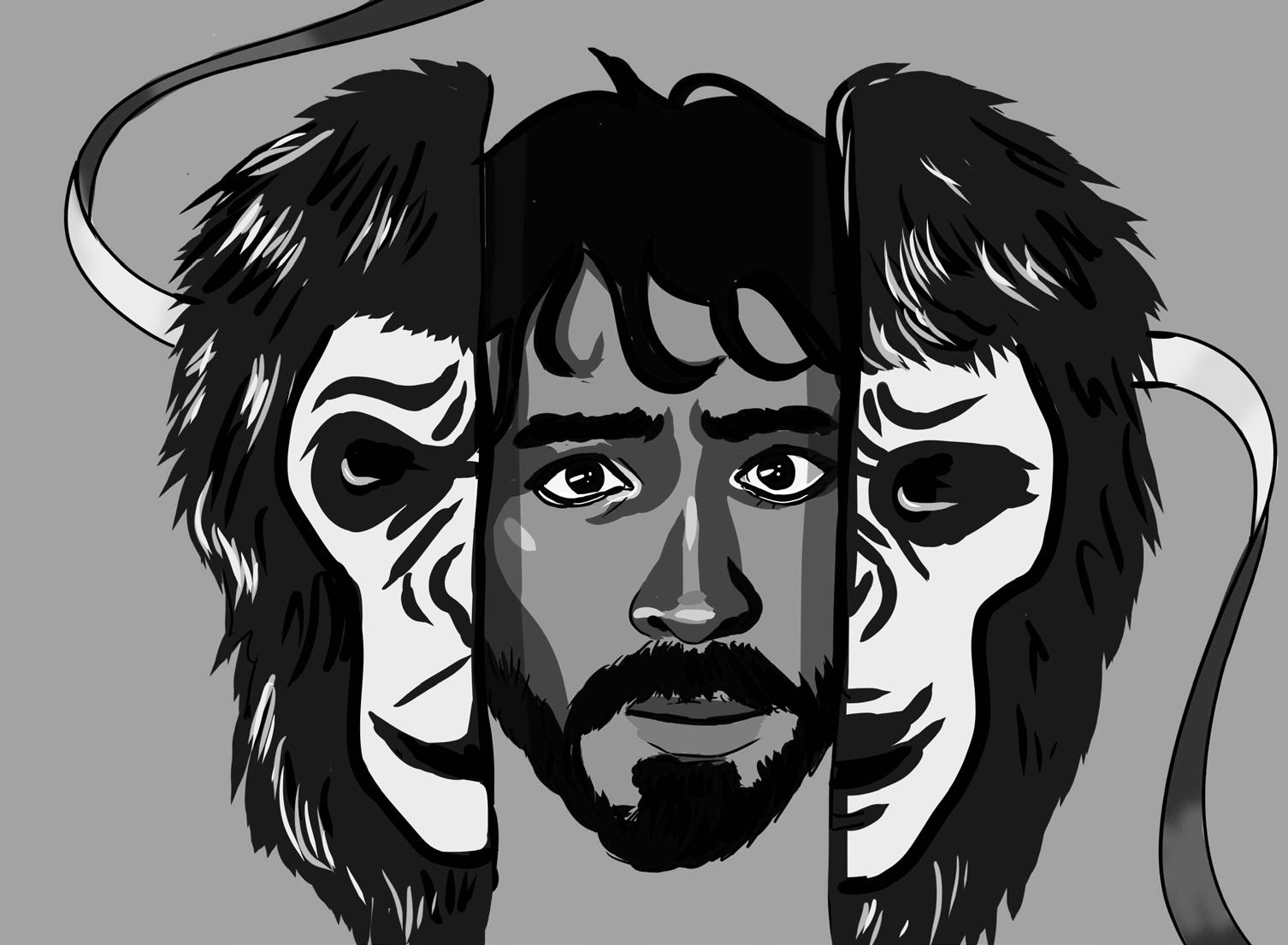
appreciate these parts of the movie but for those without, they only vaguely gesture at villainous depth.
And examinations of the antagonist party’s politics are not under-realized, but perhaps underexplored. It’s likely that viewers with a better understanding of Indian politics will greatly
THE CROSSWORD

Much of the film concerns the marginalized in society. The best example of this is the hijra, a religious community of gender nonconforming people, who take in and mentor Patel’s character. Ostensibly, they’re a sort of random (but welcome) inclusion — their reason for helping Patel is slightly flimsy. Yet, they help to ground the film in
the realistic struggle against oppression, and besides, are a respectable representation of a vibrant community. They are what elevates the film beyond just “Indian John Wick” or “Indian Bruce Lee.” By depicting the vulnerability of so many in India, Patel creates a much more believable and compelling underdog narrative for his vengeance quest.
Patel has made his stance on this clear in interviews, saying, “The action genre
has sometimes been abused by the system. I wanted to give it real soul, real trauma, real pain.” In other words, the action and its corresponding culture are a package deal.
Patel is right: in combining his world-class action with a mature cultural framework, he strengthens both. Like most first-time directors, he may bite off a bit more than he can chew, but like its hero, Monkey Man’s roughness only makes it more charming.
Leadership hosts Spelling Bee
BY AMAR WALKER staff writer
Berkeley High School’s first annual Spelling Bee took place on Friday, April 12, 2024 in the Community Theater. It was hosted by the sophomore class leadership team, and offered a $100 cash prize to the victor. All the participants made a valiant effort, and freshman Violet Kessler won after spelling the final word “connoisseur.”
“I’m actually very surprised. I did not think I would even come close (to winning), so it’s a very exciting surprise,” said Kessler, recounting the experience.
With 17 participants, the rules allowed for more flexibility compared to the typical rigidity of spelling bees, such as the Scripps National Spelling Bee. The judges were able to propose a do-over of a round after
recognizing that words given in the same round were not at equal difficulty levels. Participants tackled words like “colloquial” and “proscenium,” and whoever verbally spelled them correctly was able to move into the final rounds.
As the participants dwindled into single digit numbers, Kessler knocked out one word after another. “The excitement when you got a word right was really nice,” she said.
“I just did it for fun,” said freshman Linus Hohmeyer, who made it to the final rounds before misspelling liaison. “I thought it was spelled L -I -A -S -O -N but it was spelled L -I -A -I -S -O -N. So yeah, that was the hardest word.”
The Spelling Bee was full of welcoming and supportive people, making it a great atmosphere for a friendly competition. “I got to meet some people that
I sat next to, and that was pretty fun,” said Hohmeyer. Sophomore class president Sofia Bloom spoke about the inspiration for the Spelling Bee, which she credited to the leadership team. “We were brainstorming events that we think people would actually like to take part in. Eliza (McGlashin), the senior class president, was like ‘you should do a spelling bee’ ... and we did it,” said Bloom.
The Spelling Bee may have been relatively smallscale, but BHS leadership hopes to grow the event into a popular tradition.
“It (was) fun seeing all of these people I’ve never met before compete and spell words,” Bloom said. “It was pretty enjoyable to watch.”
Editor’s note: Violet Kessler creates the crossword for the Jacket, but was not involved in the writing or publication of this article.
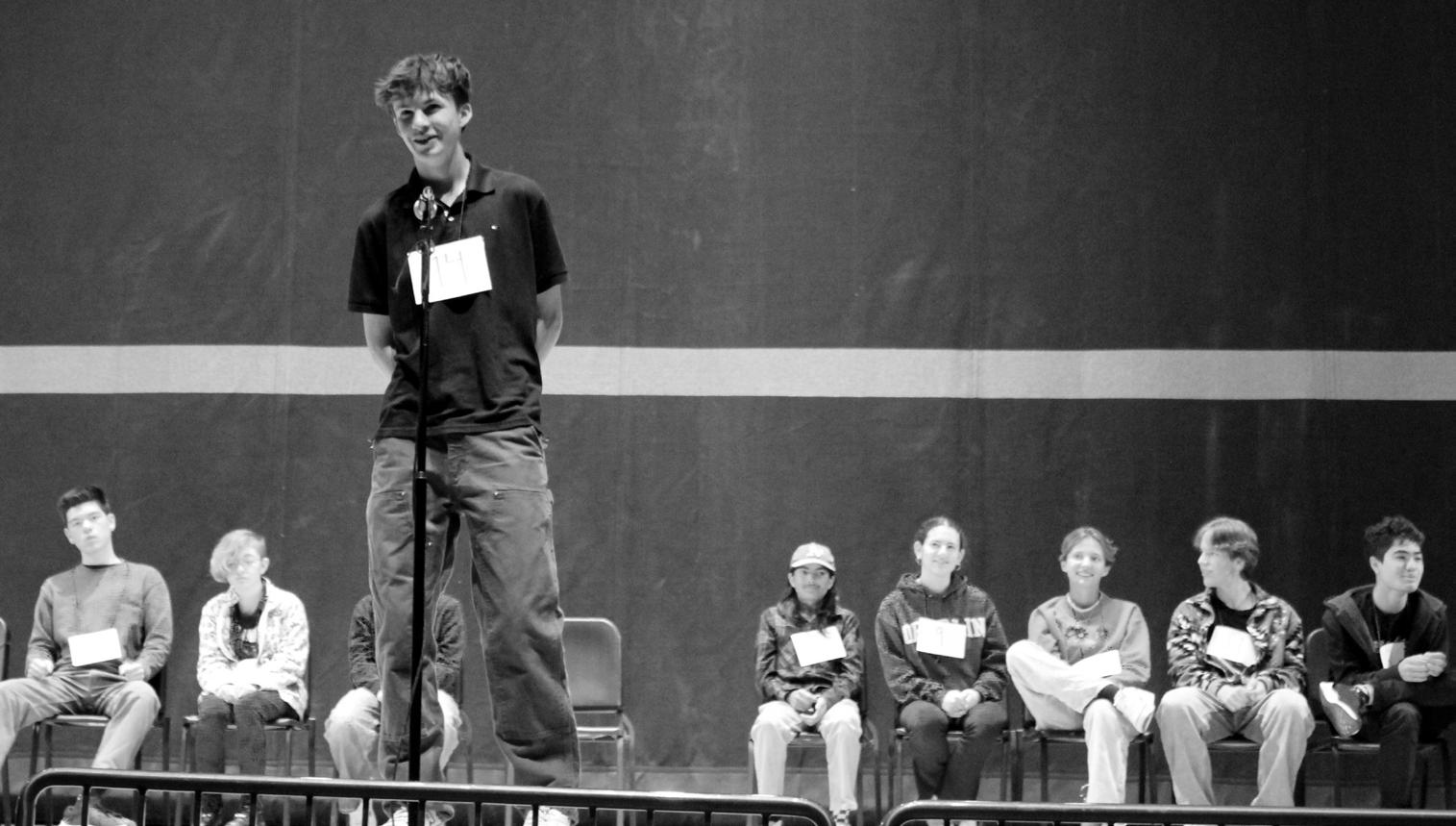
ENTERTAINMENT 14 FRIDAY, APRIL 26, 2024
— Raven Fonseca Jensen
ACROSS 1. Non-copyrighted Frisbee 5. Worship location 10. Tall, ___, and handsome 14. City home to over 1.5 million Norwegians 15. Uninspired color in interior decorating 16. Sacred image 17. Hold back, with “in” 18. Cady’s crush in “Mean Girls” 19. What’s often held in a yard or a garage? 20. Middling 22. Like a well-trained puppy 24. Human/goat in Roman mythology 25. ”Bubbly” Nestle chocolate from the Commonwealth 26. Fills in 29. Spell beginning 30. Tolkien tree creature 33. Untrustworthy people 34. Biblical tower 35. Dessert often used in slapstick comedy 36. Charitable donations 37. Challenged 38. Objects used in bowling or sewing 39. Less-formal debutante? 40. Shabby 41. Truths 42. Capital of Senegal? 43. Egyptian hieroglyph meaning “life” 44. Elevator inventor Otis 45. Puts two and two together? 46. Family 47. Code 50. Cleric 54. Dull pain 55. German submarine primarily used during World Wars I and II 57. ”… or ___!” (an empty threat, often) 58. “Star Wars” princess 59. Option on an either/or test 60. Japanese buckwheat noodles 61. Join together 62. Washed-out 63. Had delivered DOWN 1. College residence 2. “Ahh…” 3. Skidded 4. Pine trees, for example 5. Ancient calculator 6. Memorize 7. Exhaust 8. “Long, long ___ …” 9. Performed, as a service 10. 1970s music genre 11. Berry rich in antioxidants and vowels 12. Basic move in gymnastics 13. Body part with an often-torn ligament 21. Clods 23. Like a presentation spoken in front of the class 25. Road for monks and Beatles 26. Cutting-edge? 27. Annoys, with “up” 28. Feet used by Shakespeare? 29. Cry of frustration 30. ”The Odyssey” and “The Iliad,” for two 31. Last baseball inning 32. “Thor: Ragnarok” actress Thompson 34. River edges 37. Flakes in one’s hair 38. Adjective advertising many dentists’ work 40. Created 41. Flutter 44. Overjoyed 45. Winning 46. Pursue 47. Emotion associated with the color blue 48. Drink that comes in cherry or blue raspberry 49. Comic-relief dad on “Modern Family” 50. What can cause a runny nose 51. Sunburn-relieving plant 52. Book identification number 53. Tidy 56. Sheepish bleat IRIS LE LIBOUX
— Violet Kessler
TRIPCEVICH
ALEX
Calder Corson speaks into the microphone on stage at the first annual Spelling Bee.
*The Jacket would like to apologize for the errors in the previous crossword.
Swimmers send off their seniors and coach
BY
On Friday, April 12, the Berkeley High School swim team held their senior night, a goodbye to both their teammates and their coach. The women’s team won, beating Castro Valley, Bishop O’Dowd, and Hayward. The men’s team came in at a close third against the same three teams.
Halfway through the meet, a speech was given for the seniors where their plans for after high school were announced, and they received posters from their teammates and flowers.
Head coach John McDonald reflected on the ceremony and said, “The thing that stood out was the amount of adoration from their teammates, the work that went into their poster boards and stuff like that. It’s a really good group of kids.”
Senior and captain, Abril Esqueda, described the work the team had been putting in and the sense of dedication. “We’ve been practicing really hard all year, and a lot of people have been dropping a lot of times. And as captain, I can say that I have seen a lot of improvement with overall
morning and afternoon attendance and how well people swim in their times,” Esqueda said.
With an older sister who is a senior on the team, Gigi RomanCrago, a sophomore on the team shared that they felt a sense of loss. However, she said that while they were sad to see the seniors go, they were excited to gain new teammates. “It’ll be fun to have a bunch of new people on the team next year,” she said.
“The
was something Esqueda said she would miss, especially, “jumping into the water and having a good workout and laughing with friends.”
kids and several aspiring Olympians,” according to McDonald
Having been hired by his former coach, McDonald said he was grateful for his time at BHS.
thing that stood out was the amount of adoration from their teammates, the work that went into their poster boards
... ”
John McDonald Swim Team Head Coach
The close community Roman-Crago described
While the seniors leaving will create a lot of changes for the team, more changes are expected, with McDonald going to coach for a club team in Raleigh, North Carolina. The new team has several “fast
“I absolutely love it here.
I’ve been blessed with three really wonderful years. Good kids, good parents, athletic department, tremendous amount of support. So just absolutely nothing bad to say. I love Berkeley High (School) and Berkeley swimming. I’m gonna miss it,” McDonald said.
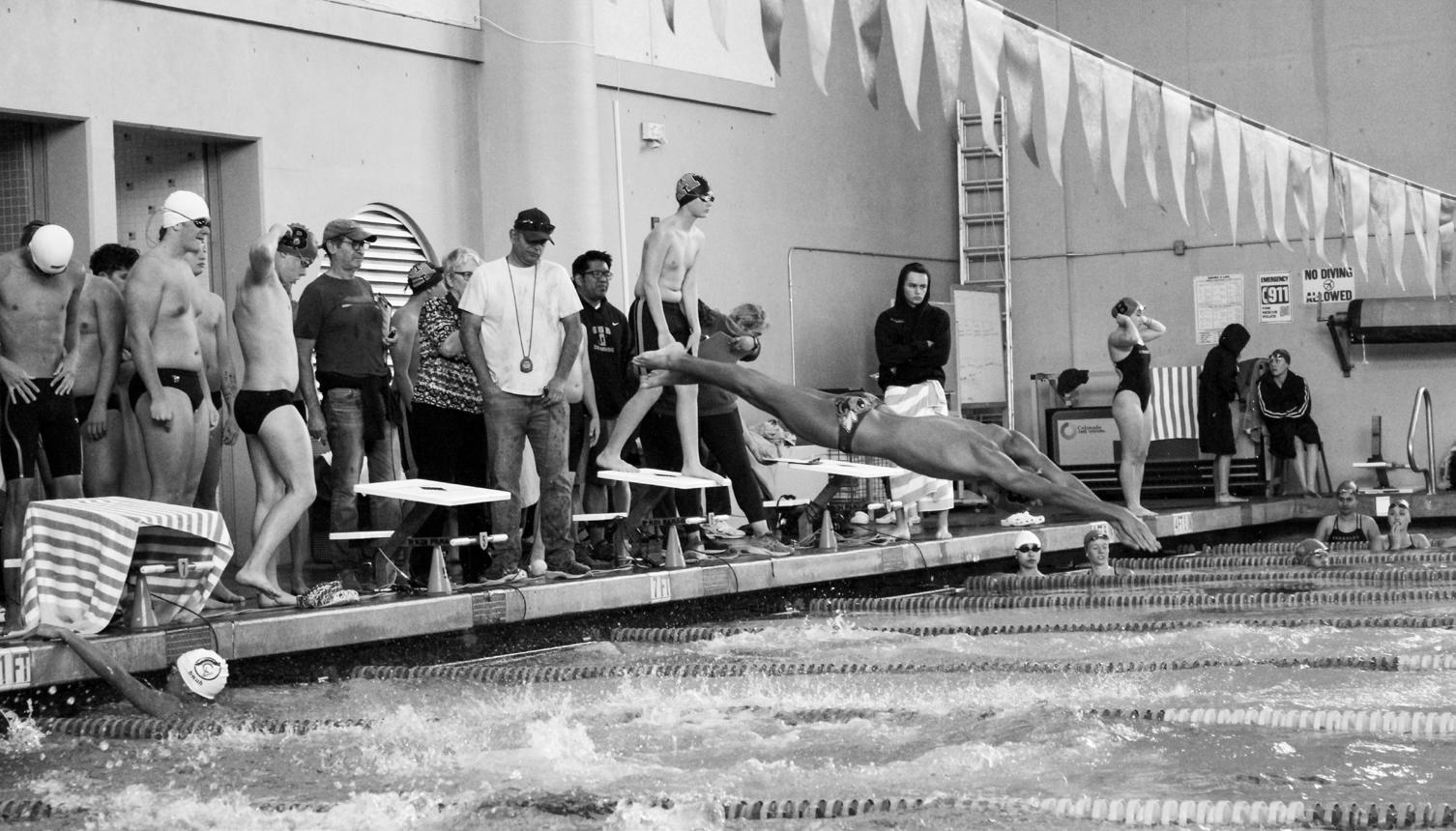
Competitive skating offers a mixed bag
BY ELSA DIETZ staff writer
In skateboarding competitions, competitors can participate in a variety of categories such as street, park, and bowl skateboarding. They are given two to three attempts to complete their combination of tricks called ‘runs.’ Judges award points based on the execution, difficulty, and flow of the run.
Zael Johnson, a junior, started competing in skateboarding during his freshman year. “There’s not that much (of a) competitive environment about it … Even in competitive skateboarding, everyone’s cheering each other on. Even your opponent is super hyped when you land a trick,” Johnson said.
Jordan Fenigstein, a BHS sophomore, started competing in skateboarding with her skate team in 2021.
“(Competitions) are fun, but … the environment can be kind of stressful,” Fenigstein said. In the days leading up to competitions, Fenigstein spends hours practicing her runs and perfecting her tricks. “You just make sure all your tricks are (consistent) …
You practice over and over and over again, so it can get a little repetitive and frustrating, but if you do it right in contests, it’s fun,” Fenigstein said.
For freshman Greyson Grubb-Smith, skateboard competitions gave him opportunities to connect with other skateboarders and explore new skateparks.
“(Competing) got me into a lot of different skateparks and stuff that I couldn’t have gotten into otherwise,” Grubb-Smith said.
Johnson stopped competing in his sophomore year due to his busy schedule, but he continued to skate with his sponsor, Squang Skateboards. “(Being sponsored) is both kind of terrifying because there’s so much of a commitment sometimes, but also kind of relieving because it makes me feel very appreciated,” Johnson said.
For Grubb-Smith, the intensity of competitions were detrimental to his physical health.
“(Competitions) kind of burnt me out a little bit. I was skating five times a week, and I was getting injured a lot … I just got knee surgery last week, and I also broke both my elbows. I was getting hurt a lot which was definitely tough,”
Grubb-Smith said. Grubb-Smith plans to skate again after recovering from his knee injury, but he is unsure if he’ll go back to competing. “(Competitions) are already making me not be able to live my life how I want to. The injuries are just getting to be so much and so long-lasting. I can’t move my elbows how I want to anymore,” Grubb-Smith said. “My goal is to grow old skating and teach my kids how to skate and just spread the joy of skating to other people when I get old.”
Fenigstein didn’t enjoy the stress and pressure that came with competition and stopped competing after two years. “I didn’t really like (competing). I felt like I was comparing myself to other people and it was a
lot of pressure on myself, which I think is why I quit contests,” Fenigstein said. Even though she doesn’t compete anymore, Fenigstein enjoys producing videos with her sponsor, Squang Skateboards. “We do a ton of tricks and go travel to different places to get clips. Then we make a big video after like a year or two and everyone comes and watches it (which is) really fun,” Fenigstein said.
Although being sponsored comes with its own pressure to perform, Fenigstein finds it less stressful than competitions. “It’s still pressure because you still want to do good and get good tricks, but (it’s) definitely a lot less because it’s not as competitive,” Fenigstein said.


The honorific before your name: essentially just a box that you tick on forms and polite formal ways to address someone. This changes if your honorific isn’t “Mr.” or “Dr.” or “Prof.” or something else which is earned (or used by simply being a man). Suddenly, if you don’t identify with one of those, you must swap over to marital status or choose an honorific that lots of people will refuse to acknowledge. The difference between “Ms.”, “Miss.”, and “Mrs.” is enormous.
The problem comes with the fact women have to be tied to either their marital status or their job description within their choices of honorifics. Men have options that don’t tie you to either. This creates the unfortunate scenario of people’s personal life getting in the way of their professional lives. By being forced to reveal information about their marital status, women open themselves up to the possibility of marital status discrimination, a very real thing.
All of these problems could be somewhat helped by asking what someone prefers. Because is it more polite than a first name? Depends on personal preference. At the end of the day, I would say, simply ask. Ask people what they prefer and how they would like to be referred to, just like you would ask someone their name, pronouns, etc.
Are they elitist? Maybe, but these honorifics also matter. People will see someone very differently if they are being referred to as “Ellie” instead of “Dr. Stevens.” You will automatically change your perception of the person. This happens, of course, because of the type of society we live in. We are all conditioned in small ways for this to matter to us. The importance has seeped into our brains, making it important to not neglect the honorific because of a factor like gender. People earn formal titles, which takes a lot of time and effort, just for them to not be used. The honorific matters more to some than others, mostly because they haven’t received the respect and credit they deserve often enough.
Additionally, the honorific can be a type of representation. I think that it’s rather important to show representation out in the real world and this is a way of doing that. This is a way of taking diversity out of the media and demonstrating it to people in communities. Honorifics are important to use because it shows people that there are all kinds of doctors and professors. People who have come a long way to achieve what they have and it’s a diverse group of individuals.
An issue also appears when people must request for their proper titles to be used. It’s considered “not feminine” and “needy” to demand being addressed that way, when in reality, people just want to feel respected. This narrative of non-men “complaining,” when they are simply demanding respect, is another way of demeaning people when trying to do their jobs. Simply asking what honorific someone would like is a small way of working towards finding solutions to address the greater problem.
SPORTS INTRODUCING, MY COLUMN ZOE WHITMAN
FRIDAY, APRIL 26, 2024
15
A swimmer dives into the pool at the senior night.
ELOISE THOMAS staff writer
ZIVA AMENDOLA
GEORGIA PAULOS
BHS junior Zael Johnson poses with his skateboard.
Bring
out the brooms: Jackets sweep O’Dowd with home win
BY NATALIE GROSS staff writer
On Friday, April 19, 2024, Berkeley High School’s varsity boys baseball team defeated Bishop O’Dowd High School at home, winning 3-2. This win marked Berkeley’s second win against O’Dowd this season, after beating them in their previous and only other match up two days prior on Wednesday, April 17, 2024.
Quinton Hill, a BHS freshman, pitched for all seven innings, striking out five, walking only one, and only giving up three hits.
“You know, there was a lot of weight on my shoulders, especially starting against a rival team,” Hill said, “I think I performed very well. I just want to continue doing so.”
Going into the game was a bit rocky for both teams. In the first inning, O’Dowd had no runs or hits. Berkeley managed to get two hits but left both runners stranded and scored no runs. In the second inning, neither team got any hits or runs. Both teams got base runners on during the third inning but were again unable to bring them home. It was not until the fourth inning when O’Dowd got a
run across to make the score 1-0. Berkeley was not able to counter in their part of the fourth and neither team was able to do anything in the fifth inning.
“It’s a rival game, so the emotions and intensity of it are at a high level, so everything is magnified during the game,” head coach Curtis Sandeford said.
During the sixth inning, O’Dowd had no runs or hits, but Berkeley managed to score twice from a clutch base hit by sophomore Keanu Moss, giving them the lead in the game 2-1.
In the top of the last inning, O’Dowd was able
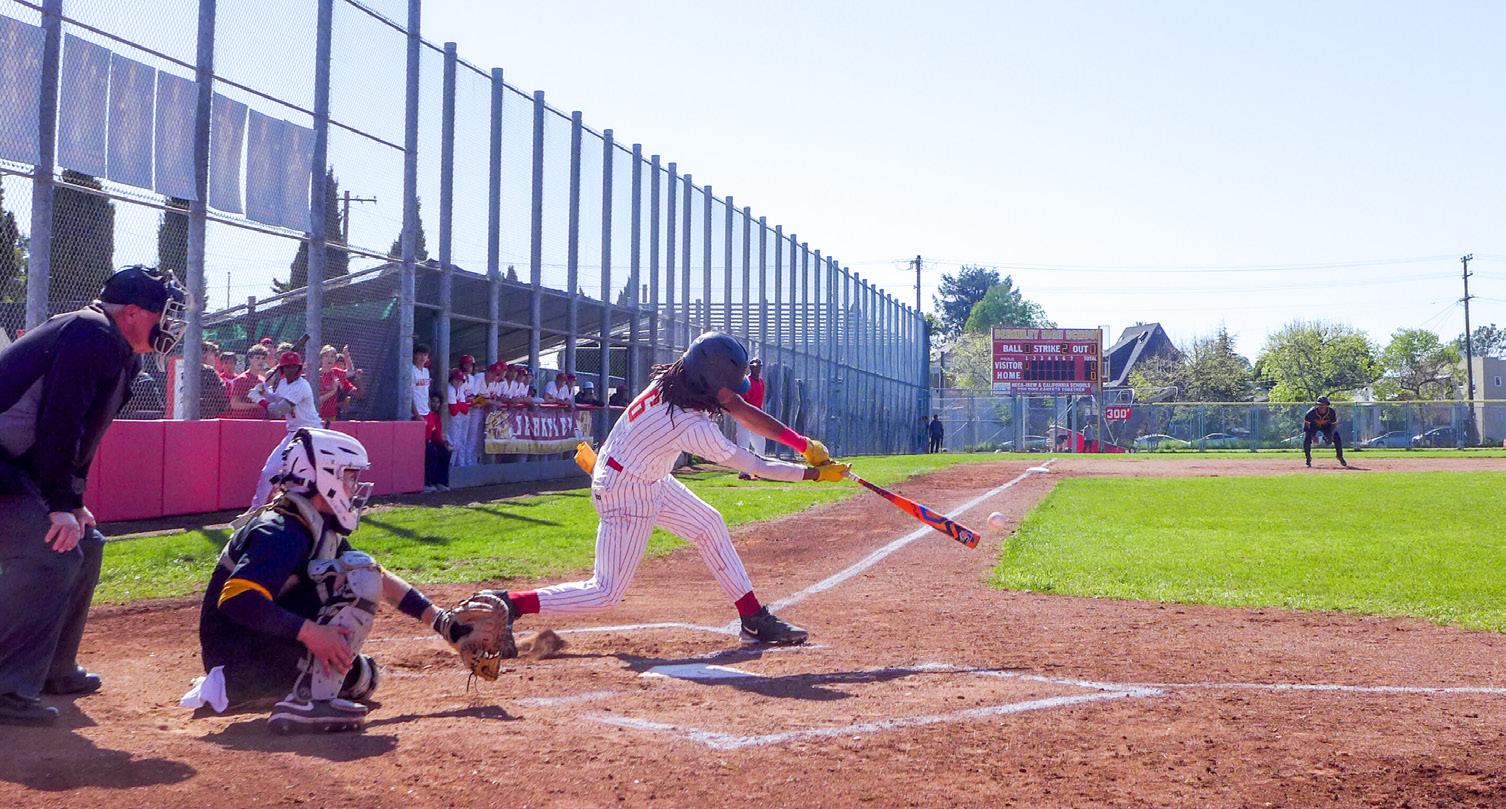
to tie the game with a solo home run. In the bottom of the seventh, Berkeley managed to get two runners on.
With one out, junior Parks Ramsdale delivered a walk off base hit, bringing home Hill on third base, ending the game 3-2. Audience members jumped up from their seats for the final run.
“There definitely was a lot more energy in this game. I think this was a pretty average game for me, but as a team is a great way
to go about,” sophomore Isaiah Mays said. “All love at the end of the day. I love these guys. We’re gonna keep riding together.”
“We pick each other up when we get knocked down and that’s just what we do,” Hill said.
ATHLETE PROFILE
Berkeley High School senior Jonah Lachs began playing volleyball his sophomore year at BHS. “I wanted to play a sport, so I went to volleyball tryouts, somehow made the team, and just fell in love with the sport from there,” he said.

Lachs found a very strong community within the team, and watched firsthand how the volleyball program developed over his years on the team. Last year, Lachs had many extracurriculars he had to juggle alongside volleyball. “It was really difficult to manage; it was just about taking it one bite at a time,” he explained. He felt that his workload became easier to handle, especially during his senior year. “I felt like I had enough autonomy within volleyball, school, college applications, and my social life, that it felt like none of them were imploding on each other,” Lachs said. He believes that there are always new skills he can try to improve on within the game. He said, “Sports don’t necessarily come as naturally to me as some other things do, so (I try) keeping in mind that it’s always a process. I’m always learning and trying to get better.”

Free SAT® and AP ® Diagnostic Tests Free Homework Help
colinaharvey@students.berkeley.net sports editors: Colina Harvey
SPORTS BERKELEY HIGH JACKET 16 FRIDAY, APRIL 26, 2024
& Leo Silverberg
Sophomore Isaiah Mays lunges for a pitch in the bottom of the first inning.
LILA HALLWARD
We’ve helped high-performing students get into their dream schools for over 25 years through test prep, GPA management, and college counseling. *expires 5/25/24 C2 Education of Berkeley 510-730-2620
— Luli Galinson
JULIAN NATHAN









 BY RORY NADEAU
BY RORY NADEAU


 BY LUCY HOHN staff writer
BY LUCY HOHN staff writer









































